Speakers

Caiti Amox
Caiti graduated from Oklahoma State University in 2016 with a Bachelor of Science degree. She received a certification with ELPO on hoof lameness and prevention for zoo hoof-stock animals and has worked with a variety of large animal exotic species for the last 10 years. Caiti moved to College Station and has been with the Food Animal Medicine & Surgery service at the Texas A&M Veterinary Medical Teaching Hospital (VMTH) for over a year now.
Sessions:
Only Hooves: Hoof Trimming and Maintenance
In this session, we will go over the basics of the anatomy of the foot to help with trimming, how to spot lameness in variety of species, and many tips and tricks to get the perfect trim!
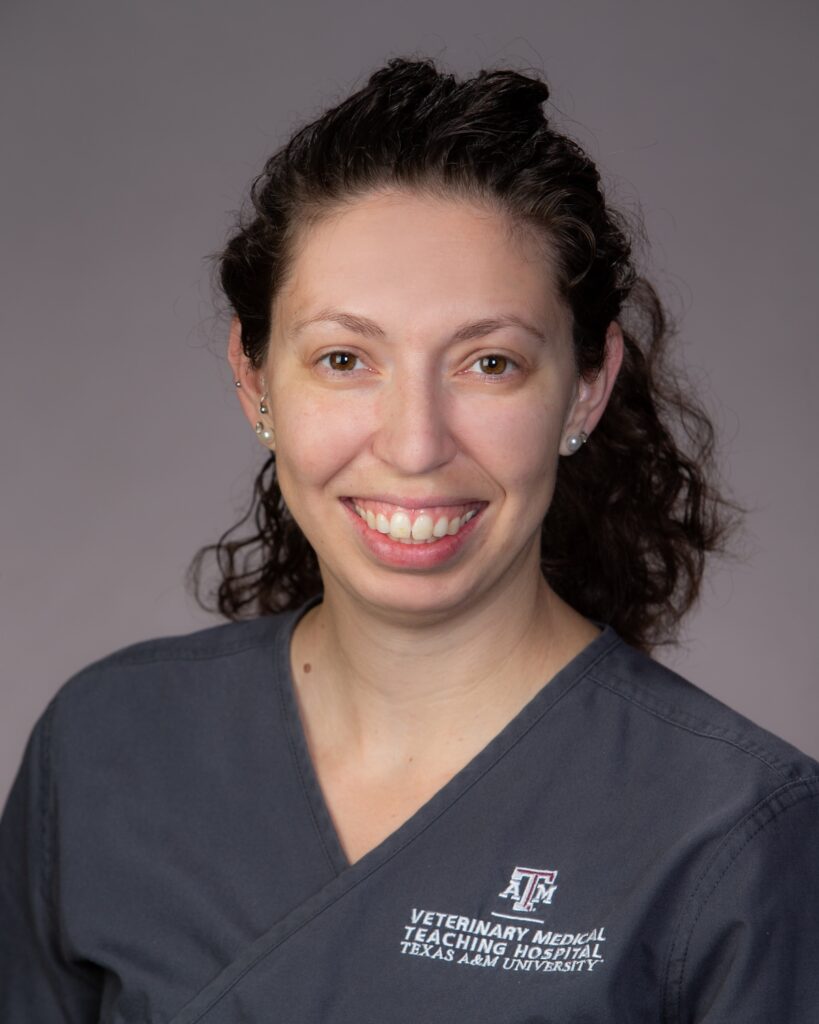
Jeannette Bayer
Jeannette has been working with horses in academia for 10 years. She has worked in Orthopedics, Sports Medicine, Food Animal, and Anesthesia. Her passion for equine anesthesia has led her to work with many surgical residents and faculty on research projects to improve the safety and positive outcomes of equine recoveries. She also loves to read, draw, paint, and run. She has competed in several tough mudder races. She loves off-the-track Thoroughbreds (OTTBs) and has competed in the American Eventing Championships 3 times. Jeannette also volunteers with the Veterinary Emergency Team and has deployed many times to places like Florida for Hurricane Ian and, more recently, North Carolina for Hurricane Helene. She has a passion for teaching anyone who wants to learn. Her free time is spent with her two little boys, her husband, and her two dogs.
Sessions:
Field Anesthesia and Analgesia
How to choose the appropriate type of analgesia and/or anesthesia for procedures to be performed in a field or private practice setting. This talk will cover standing sedation, TIVA, different options of analgesics from local blocks to intravenous medications, plus safety during induction and recovery.
Equine Recovery the Aggie Way
There are many different ways to recover horses from general anesthesia. This lecture will cover the main way horses are recovered at Texas A&M University and also touch on some of the research we are doing to make recovery safer for horses and the recovery team.
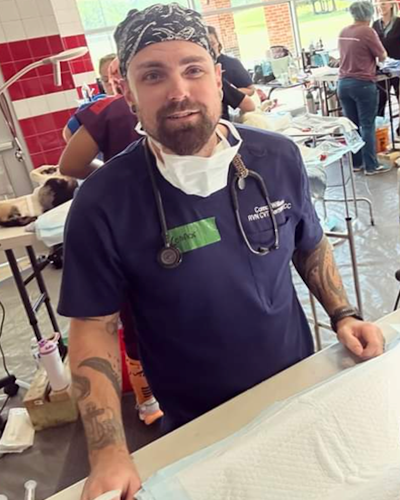
Connor Burns, RVN, RVT, CVT, CertVNECC
Connor graduated as a registered veterinary nurse (RVN) in the United Kingdom in January 2021. He has over 10 years of experience working in veterinary hospitals, including working in one of the leading veterinary referral hospitals in the UK prior to moving to the US. His main areas of interest are ECC and Anaesthesia.
Connor emigrated to the United States in December 2022 with his wife and three dogs. He currently works at Sugar Land Veterinary Specialists as a critical care technician. Since arriving in the US, he has completed the VTNE and is currently licensed in Wisconsin and Louisiana. In March 2024, he completed a two-year postgraduate certificate in ECC. He is currently working towards VTS certification in ECC. This year, his article, “A Review of Carbon Monoxide Toxicity in Veterinary Medicine,” will be published in the BVNA Veterinary Nursing Journal.
In his spare time, Connor enjoys working at spay and neuter events, traveling with his wife, running, and has an ultra-marathon scheduled in Poland for June 2025.
Sessions:
Silent Danger: Understanding Carbon Monoxide Toxicity in Veterinary Patients
Carbon monoxide toxicity is a well-documented condition in human medicine but limited information is available for veterinary medicine. In this presentation, we will discuss the pathophysiology of carbon monoxide toxicity, clinical signs, what an initial triage plan would be, diagnostic tests, treatment options in human medicine, treatment options in veterinary medicine, medications, and nursing considerations.
Navigating Pain: Advanced Analgesic Options for Critical Patients
Pain is an everyday occurrence in veterinary medicine, from specific disease processes to post-surgical management. Critical patients are no different but require more consideration. In this presentation we will discuss options available to provide analgesia to critical patients along with monitoring effectively using pain scoring systems designed for use in dogs and cats. I will cover injectable medications, constant rate infusions, oral medications, local analgesia, and sedation vs pain.
Case Report: Hypercapnoea Following Lateral Thoracotomy
We will discuss a case of a feline patient who underwent a thoracotomy for the removal of a thymoma, and during surgery, the phrenic nerves were damaged. During the recovery period, the patient became hypercapnic as a result of hypoventilation. We will discuss the difference between ventilation and oxygenation, how to evaluate ventilation and oxygenation, emergency interventions required to stabilize a patient, manual ventilation, mechanical ventilation, tracheostomy ventilation management, discontinuing mechanical ventilation, and post-ventilation care.

Brecca Jo Coffman-Wheaton
With over 30 years of experience with horses and 10+ years as a technician, including six years at Texas A&M, Brecca’s passion is equine sports medicine and performance horse care. Drawing from a deep-rooted background in rodeo and cow horse disciplines, Brecca is dedicated to optimizing equine performance and health of athletes. Passionate about teaching, Brecca enjoys sharing knowledge and helping others excel. A fun fact: Brecca has also been a professional Western lifestyle photographer for 14 years, capturing the essence of the cowboy world.
Sessions:
Bandaging: That’s a Wrap
Why do we bandage? When, how, and the various different ways it can be done. Need to splint? We can do that too!
MRI: Start to Finish
The process of referral MRI cases, from intake to discharge
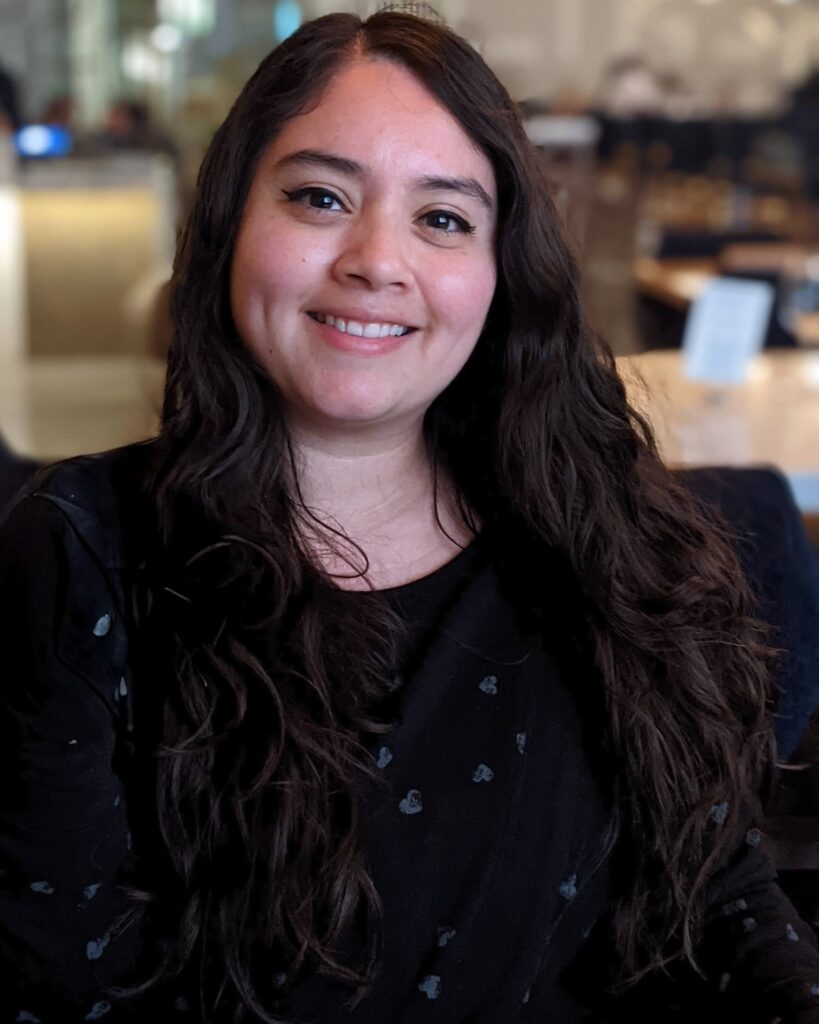
Sandra Cole, LVT, RLAT
Sandra is a senior research lab manager overseeing a visual neuroscience lab. With over a decade of experience in veterinary medicine, her work spans low-cost clinics, specialty hospitals, and research facilities, where she has cultivated a strong passion for animal welfare and a comprehensive understanding of clinical care and scientific research. She performs a range of surgical procedures and plays a key role in advancing research techniques in her current position.
Sessions:
Enhancing Research with Skilled Veterinary Technicians
Veterinary technicians are vital to advancing research through their expertise and dedication. This session highlights the diverse roles and skills technicians bring to research environments, from ensuring animal welfare to supporting complex procedures. Attendees will gain insights into how skilled veterinary technicians enhance research quality, uphold ethical standards, and bridge the gap between clinical care and scientific innovation. Real-world examples and practical tips will illustrate the critical impact of technicians in achieving research success.
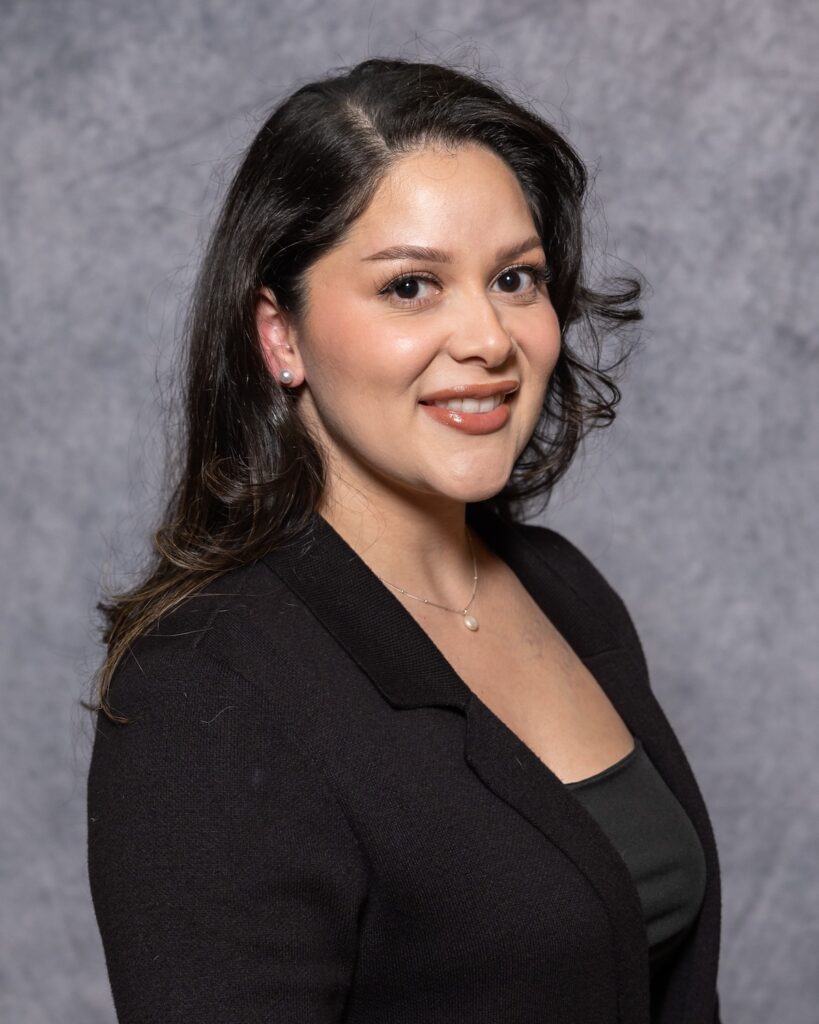
Kathrine Coronado, LVT, VTS (Ophthalmology)
Kathrine has been a licensed veterinary technician for 14 years. She joined Eye Care for Animals in 2013 and obtained her VTS in Ophthalmology in 2021. After spending most of her ophthalmology career at the Houston practice, she is now an area business manager managing eight Eye Care for Animals locations. She ensures the staff provides exceptional ophthalmic care through mentorship and training. She has a special interest in cataract surgery and ophthalmic diseases in exotics. She has a shih-tzu named Charlie and three cats, Simon, Alfredo, and (blind—but perfect) Badger.
Sessions:
Veterinary Ophthalmology for Veterinary Technicians
In this session, we will discuss ophthalmology basics that veterinary technicians can apply every day in general practice, including proper restraint for ophthalmic exams and vision testing.
Cataracts and Cataract Surgery in Companion Animals
Cataract surgery is a very rewarding procedure in veterinary ophthalmology. Cataracts can cause complete blindness, and, in some cases, this occurs suddenly. Surgery restores vision and improves the animal’s quality of life. In this discussion, we will go over the causes, complications, and treatment of cataracts in companion animals.
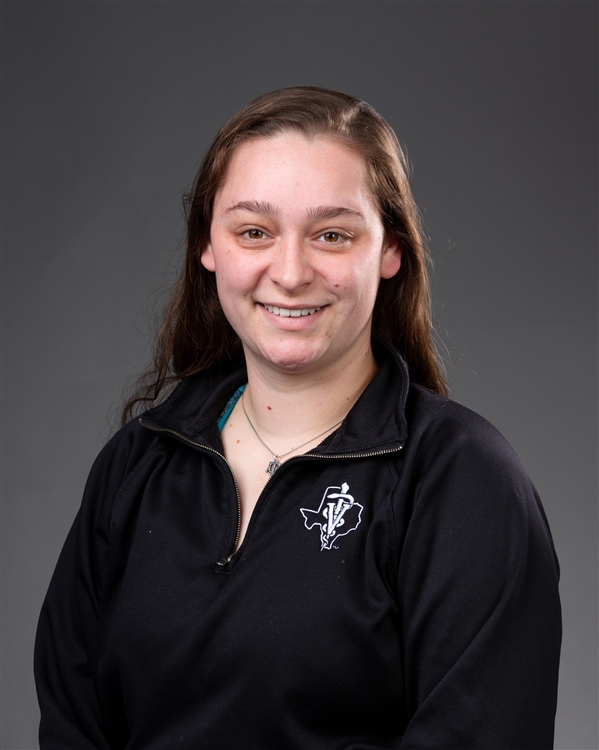
Hailey Drerup, DVM
Dr. Hailey Drerup is currently completing a Food Animal Internship at Texas A&M University, where she also earned both her undergraduate and Doctor of Veterinary Medicine degrees. Her passion for agriculture began early, growing up involved in livestock showing, and deepened during her clinical years in veterinary school, where she focused heavily on food animal medicine. Throughout her training, Dr. Drerup has developed a strong interest in rural and production animal health, and she is particularly committed to bridging the gap between clinical practice and practical, real-world application in the livestock industry. In addition to her work with food animals, Hailey has discovered a genuine love for teaching and mentoring others. Whether in the clinic or the classroom, she is driven by a desire to help others grow in their understanding and confidence within the field.
Sessions:
Bovine Brew: Uncovering the Magic of Rumen Fluid
In this session, we’ll take a deep dive into the world of the rumen and explore how to keep it functioning at its best. Attendees will learn about the key components of healthy rumen fluid and why they are vital to ruminant health. We’ll cover practical techniques for collecting and evaluating rumen fluid samples, as well as how to interpret abnormal findings. Whether you’re in the field or the clinic, this session will equip you with the tools to better support the digestive health of your ruminant patients.
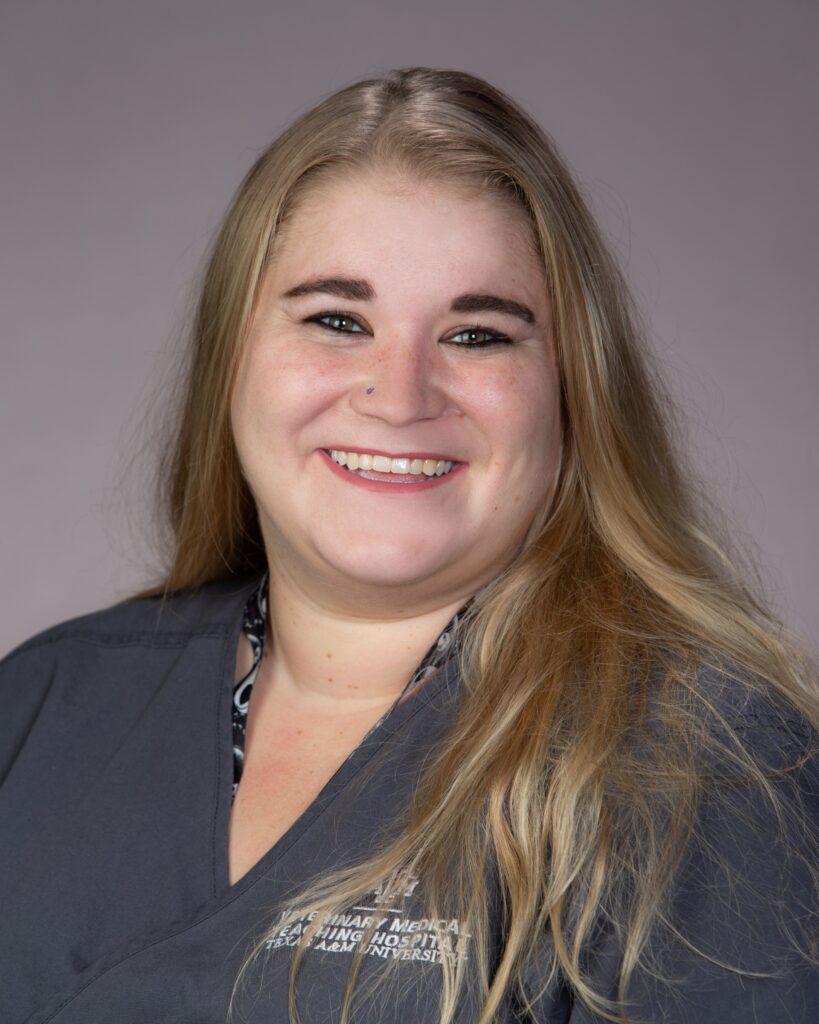
Alexis Fichtel, LVT
Alexis began her veterinary journey in 2015 as a volunteer at an equine hospital, quickly transitioning into a full-time role in equine emergency medicine. It was during this time that she developed a passion for equine anesthesia. She went on to graduate from the veterinary technology program at Lone Star College—Tomball in 2019, earning her credentials as a licensed veterinary technician (LVT). Shortly after, she joined the VMTH as a large animal anesthesia technician, a position she has held ever since. What began as a love for equine anesthesia has expanded into a deep appreciation for farm animal anesthesia as well. She enjoys the unique challenges of anesthetizing large animals and values the opportunity to work with such a diverse range of species.
Sessions:
Ruminate in Rest: A Guide to Ruminant Anesthesia
Anesthetizing large animals, especially ruminants, involves numerous challenges due to their varying sizes. In this presentation, I’ll cover common anesthetic complications, how to develop an effective anesthetic protocol, tips for IV catheter placement and intubation, monitoring techniques, and best practices for anesthetic recovery in our hoofed friends.
Snouts and Snoozes: A Guide to Pig Anesthesia
The idea of anesthetizing a pig can be intimidating, but I’m here to guide you through the essentials of pig anesthesia. We’ll start by reviewing their unique physiology, and the specific challenges pigs present in anesthesia. Then, we’ll cover how to choose an anesthetic protocol, establish venous access, provide intubation tips and tricks, implement effective anesthetic monitoring, and ensure smooth pre-and post-operative care for our patients.
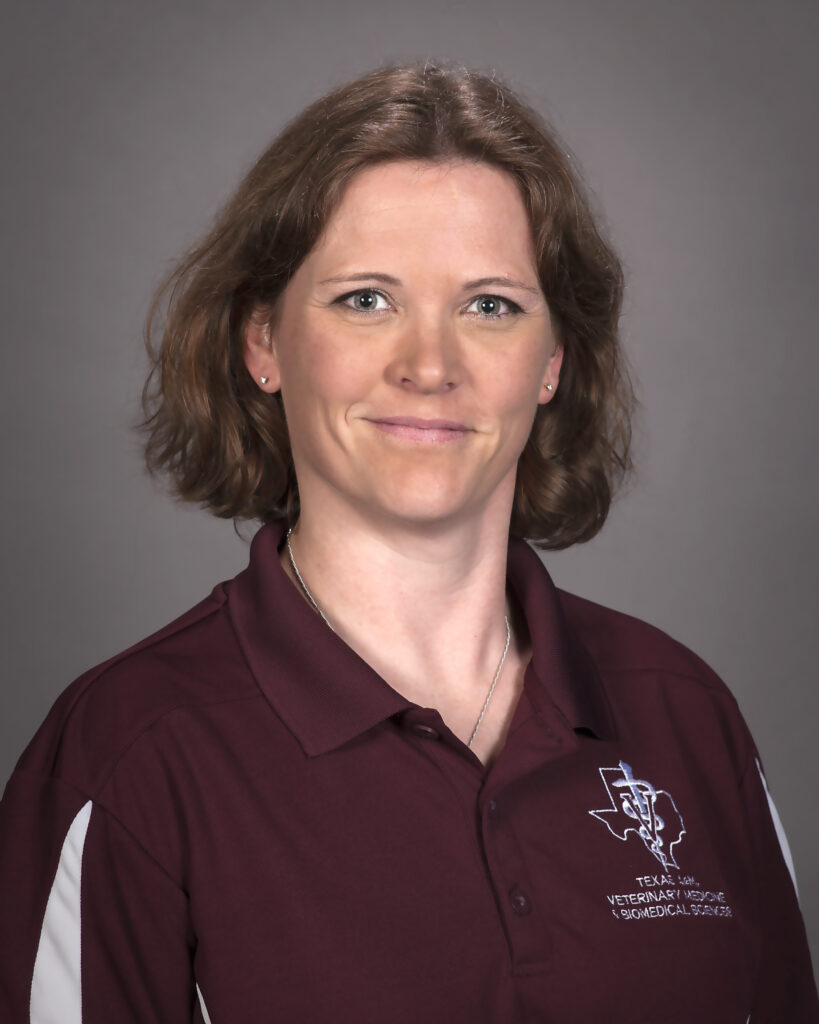
Amanda Friedeck, LVT, VTS (Dermatology)
Amanda started working at the VMTH in 1995 as a student worker and worked her way up to the dermatology service in 2003. In 2007, she graduated with a Bachelor’s degree in Animal Science and received her LVT in the summer of 2014. Amanda became one of the first technicians to pass her specialty board exam to obtain her VTS (Dermatology) in the summer of 2018. Amanda has published multiple articles in veterinary magazines and a book chapter and enjoys speaking to technicians across the state on dermatologic conditions. Amanda’s other interests are her family, wildlife management, and canine sports.
Sessions:
Ear Today, Gone Tomorrow: Ear Disease in Small Animals
Ear disease in small animals can be a very frustration disease for owners to manage. As a technician what can be done to reduce the risk of severe disease? This lecture will go over basic external ear canal collection and examination, the stages of ear disease and treatment protocols for each stage.
Cutaneous Adverse Food Reactions in Small Animals
Cutaneous adverse food reaction (CAFR) is defined as an aberrant reaction after the ingestion of food or food additives. This lecture will cover what a food reaction is, common myths about food allergy and how to diagnose and treat food allergy
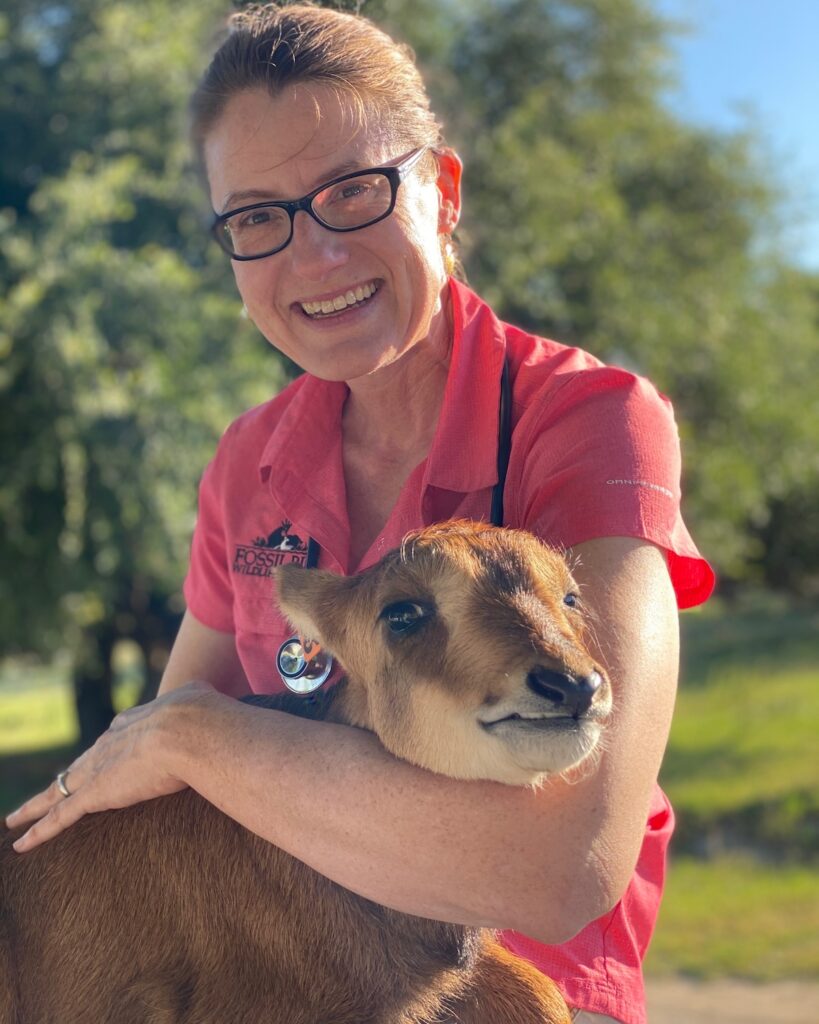
Holly Haefele, DVM
Dr. Haefele’s love of ungulates began in undergrad studying feral horse behavior. Shortly after earning her DVM at Tufts in 2000, she returned to hoofstock as Fossil Rim Wildlife Center’s associate veterinarian. Since 2006, she has been the Director of Animal Health and oversees all research. Sometimes, she deals with the hoof-challenged: she is the veterinary co-advisor to the Cheetah SSP and sees about 200 Attwater’s prairie-chicken patients each May.
Sessions:
Cheetahs: A Fast Run at Their Unique Medicine and Management
Cheetahs pose management and medical challenges that are often unique to their species. This presentation will give an overview of current breeding center management and medicine practices, including preventive care and common health concerns.
Fantastic Little Beasts: Parasites at Fossil Rim Wildlife Center
From the common horribles like Haemonchus, to the weirdo worms like acanthocephalans, Fossil Rim sees the full spectrum. This presentation will introduce the parasites that impact our diverse wild species and how we try to manage them.
Giraffe Anesthesia: It’s a Long Story
Giraffes in human care can require anesthesia for various reasons, including hoof care. Their unique anatomy and physiology make them anesthetic challenges. This presentation will review those challenges and Fossil Rim’s field immobilization protocols.
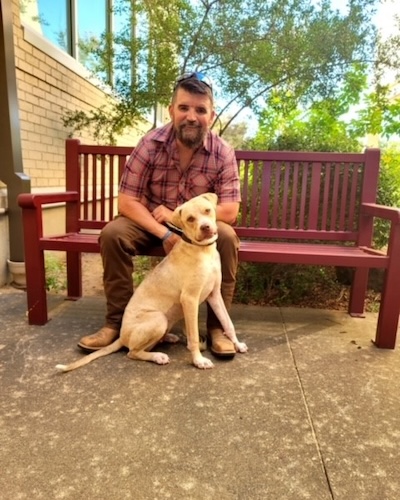
Mike Hawkins, MA, LPC
Michael Hawkins, MA, LPC, is a licensed professional counselor with more than 25 years of experience who compassionately attends to the human needs that arise in the practice of veterinary medicine. He’s currently the embedded counselor at the VMTH. Before coming to Texas A&M, Hawkins was a founding member of the Houston Police/Harris County Sheriff/Harris Center Crisis Intervention Response Team (CIRT).
Sessions:
Resilient Mind
How we think and view the world affects not only our emotions but also how our body reacts. In this session, we’ll discuss ways to better understand how we think. We’ll look at ways to correct negative thinking as well as ways to thrive. The better we understand how we think, the better we will be at dealing with stress. We’ll also be talking about having a mission and ways to renew and restore our minds.
Resilient Body
In a difficult situation, our body is sometimes unhelpful. Think about some stressful situations you have been in and how your body reacted. In this session, we’ll discover and talk about ways to revive and renew our bodies. The more control we have over our automatic responses, the more control we’ll have in difficult situations.
Working with Challenging Clients
In veterinary medicine, we interact with both humans and animals. In this session, we’ll be talking about communication skills and ways we can effectively develop rapport with clients. Being present, self-aware, calm, empathetic, and fact-based helps both the client and yourself.

Stefanie Hinojosa, LVT
This session will equip teams and leaders with the tools and strategies to effectively inform, train, and guide their teams through organizational changes while addressing the human side of change.
Sessions:
I Can Do It with a Broken Heart: Leading Through Change with Resilience and Empathy
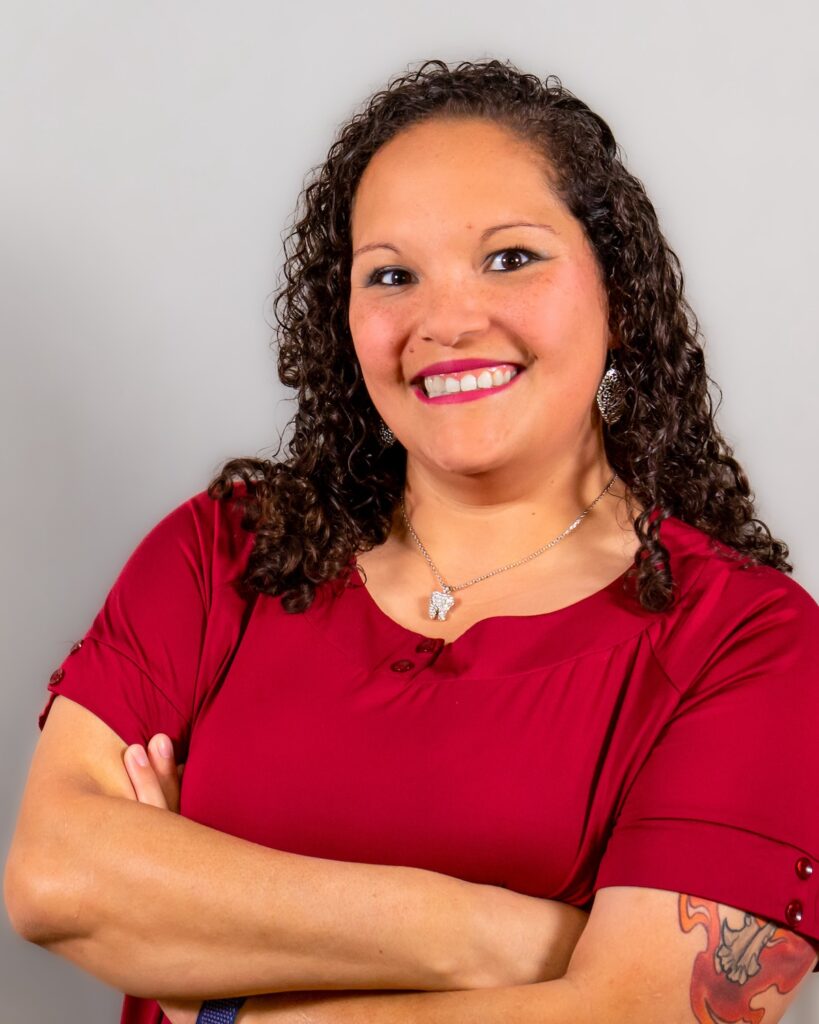
Vanessa Huizar, LVT, VTS (Dentistry)
Vanessa Huizar was born and raised in San Antonio, Texas, where she obtained her LVT certification from Palo Alto College in 2008. She has worked in general practice, shelter, emergency, and specialty medicine. During this time, she found her love for veterinary dentistry. She obtained her VTS in Dentistry in 2018. She has had the opportunity to lecture internationally and to over 300 technicians locally. She has also helped host and participate in many hands-on labs across the country.
Vanessa uses her love of veterinary dentistry to encourage others in the field to find what makes them happy. She also helps run vaccine and wellness clinics in San Antonio and helped start the San Antonio Chapter of The Street Dog Coalition. She lives with her fiancé and has two dogs, Titus and Echo.
Sessions:
So Fresh and so Clean … Clean: Not Just a Dental Cleaning
During this lecture, we will explore the COHAT procedure from start to finish. From when the patients first come in for a consultation to the conscious oral exam, we’ll look at what questions to ask and what signs to look for when a patient does not have good oral health. Then, continue through the actual anesthetized exam and how to determine what we are seeing in that patient’s mouth.
1. Review frequent questions discussed with owners to determine their pet’s oral health.
2. Review the steps of full COHAT and proper techniques.
3. Review proper hand scaling and hand curetting.
4. Review common and everyday dental abbreviations and how to properly chart.
5. Discuss discharge and at-home care dental care for patients.
Do it for the Root!
Dental radiographs are one of the most important parts of a full COHAT. The majority of the tooth lies under the gumline, and without being able to see the bone and fully around the roots, we may be leaving something that can cause pain and future issues in our patients.
1. Discuss why dental radiographs are so important and why they are becoming the standard of care in every case.
2. Learn the difference between the bisecting angle and parallel technique and when it is appropriate to use each.
3. What pathology looks like and common treatments for problems found in radiographs.
What is thaaat? The normal vs. abnormal is veterinary dentistry
When looking into a patient’s mouth, a technician needs to be able to determine if there are any abnormalities to report to veterinarians. Technicians play a vital role in veterinary dentistry, as they are the ones charting and performing the cleanings. This lecture will go over common pathologies that technicians may encounter and how to record them on a dental chart.
1. Review normal pathology in the mouth.
2. Be able to identify abnormal pathology.
3. Learn how to notate and record pathology found in the mouth.
4. Discuss common oral tumors.
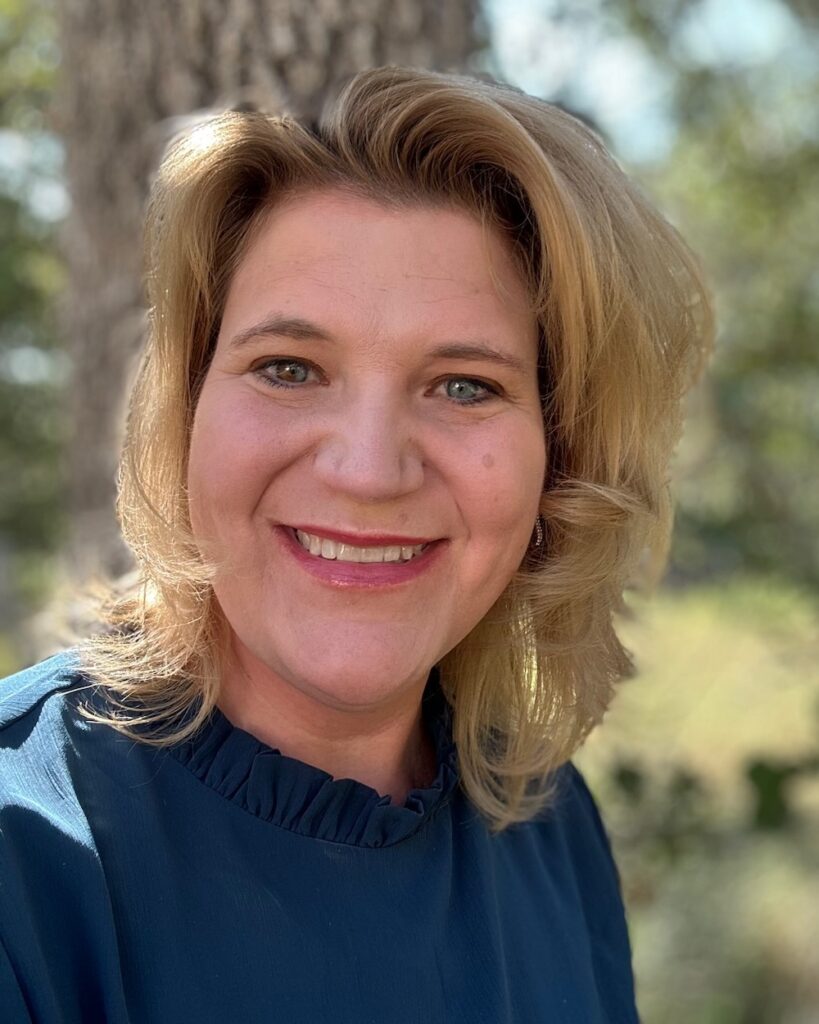
Monica Janacek, DVM, MBA
Dr. Monica S. Janacek grew up on a farm in the small town of Hallettsville, Texas. She put herself through Texas A&M University, graduating with a BS in Biomedical Science (’00), DVM (’04), and an MBA (’05).
After three years of large animal practice, she pivoted into small animal practice after a series of injuries led to a shoulder replacement and cervical fusion. In small animal practice, she then took a struggling practice from $200K to $2M in revenue.
After many life experiences and professional growth, Dr. Janacek became a consultant to help veterinary professionals at all levels find direction and success in our profession through effective coaching and personalized education.
Sessions:
No Drama Y’all: Preventing and Managing Conflict in the Veterinary Workplace
In this session, we will discuss the four types of communication, the most common root causes of conflict and drama, and strategies to prevent and limit toxic behavior before it poisons your team.
Leadership Skills to Maximize Your Career Trajectory
Ever tried to manage other people? It’s the toughest part of our job! In this session, we’ll review the ever-changing set of soft skills needed to effectively lead cohesive, effective, and productive teams.
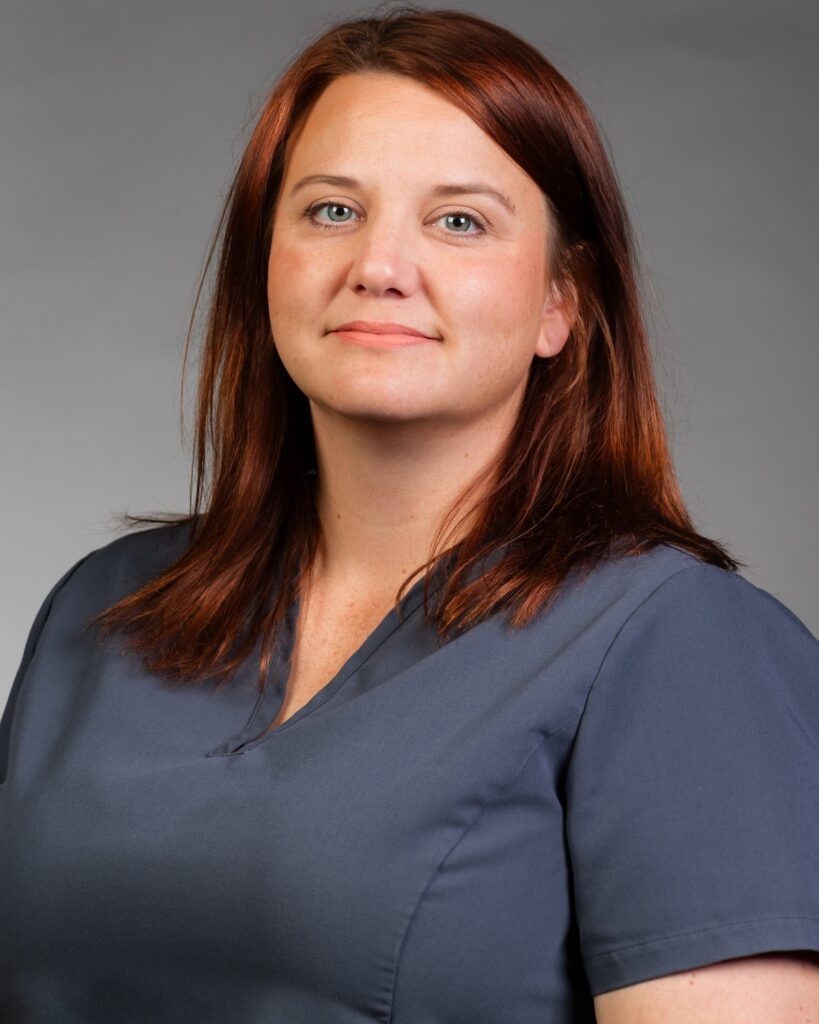
Lisa Jolley
Lisa has worked in various roles in equine veterinary medicine for over 20 years, from anesthesia at a busy multi-surgeon sports medicine practice in Weatherford, Texas, to her current role as the lead theriogenology and equine fertility laboratory technician at the VMTH. Her research interests include aged stallion management and the management of stallions in active competition.
Lisa grew up competing in dressage but transitioned to showing in reining and reined cow horses while she was attending Texas A&M. When not working with horses, Lisa is found playing with her son and their dogs on their small farm.
Sessions:
A Work of A.R.T: The Veterinary Technician/Assistant’s Role in Equine-Assisted Reproductive Technologies
An overview of various reproductive technologies with a special emphasis on the technician’s role in the procedures.
Boy Trouble: Reproductive Issues in the Stallion
A look at common reproductive problems in the stallion using case studies.
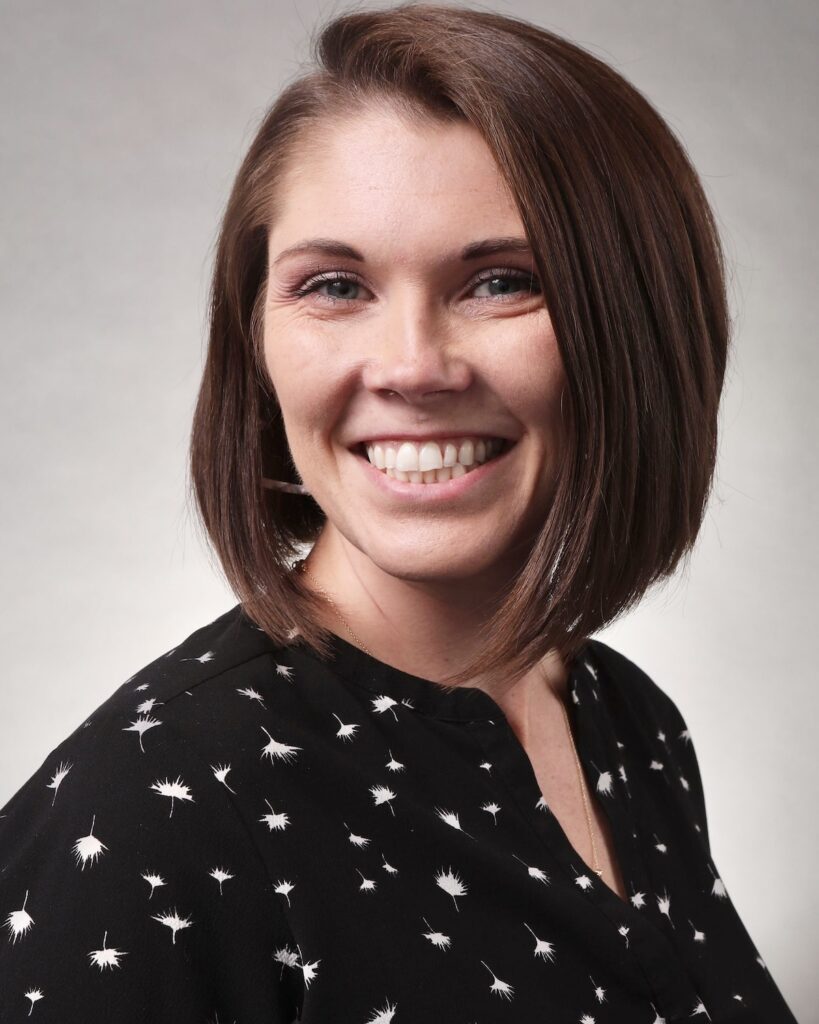
Lanette Jordan, LVT, VTS (Anesthesia & Analgesia)
Lanette received a Bachelor of Science degree in Secondary Education with an emphasis in Biology in 2011, followed by a Bachelor of Science degree in Veterinary Medical Technology in 2014 at Mississippi State University. She then worked in the anesthesia department in the Animal Health Center at the College of Veterinary Medicine at Mississippi State University, which allowed her to combine her love of both veterinary medicine and teaching. In 2019, she was accepted into the AVTAA as a VTS in Anesthesia and Analgesia.
Currently, she works in the Anesthesia Service at the VMTH as the training coordinator, overseeing the development and training of new employees as well as providing opportunities for continuing education and training to current staff members.
Outside of anesthesia, Lanette loves cooking and is constantly experimenting with new recipes, which her sweet and appeasing husband taste tests. She also loves being outside and finds nothing better than being on a kayak on a slow-moving river, just enjoying the feel of the sunshine and smell of the water. Most of the time, though, she just enjoys spending time with her family. They keep her on her toes, with her two children, two dogs, and three cats there is always something going on in the house.
Sessions:
Anesthetic Considerations for Patients with Septic Peritonitis
Septic peritonitis can result in a range of complex clinical signs, including hemodynamic instability, arrhythmias, clotting abnormalities, edema, lethargy, and pain. Many affected patients will require both anesthesia and surgery to locate and address the source of the infection. As a result, the anesthesia team often plays a crucial role in the ongoing stabilization and supportive care of the patient throughout the anesthetic process. This lecture will discuss both supportive care and anesthetic considerations in these patients.
Anesthetic Considerations for Patients with Gastric Dilatation-Volvulus (GDV)
GDV is a life-threatening condition frequently encountered in large-breed or deep-chested dogs, characterized by the rapid distension and rotation of the stomach. This lecture will focus on the anesthetic management of GDV, covering essential stabilization techniques, monitoring strategies, and supportive care throughout the anesthetic and perioperative periods. Key considerations, including hemodynamic instability, respiratory distress, arrhythmias, pain, and electrolyte imbalances, will be discussed to ensure optimal patient outcomes.
Anesthetic Considerations for Patients with Feline Urethral Obstruction
Feline urethral obstruction is a common and emergent condition that frequently necessitates sedation or anesthesia for diagnostic and therapeutic procedures, such as urethral catheterization, cystostomy, or perineal urethrostomy. This lecture will examine the key anesthetic considerations for these patients, focusing on managing electrolyte imbalances, dehydration, pain, and potential renal dysfunction to optimize anesthetic care and improve patient outcomes.

Erica Kubichek, LVT
Erica is from Bryan, TX. She graduated from the Blinn College Veterinary Technician program in 2018, and is a licensed veterinary technician. Erica has worked at Texas A&M University since 2018 in the food animal department, and has a strong passion for all things food animal. She is married with a stepson and daughter, and enjoys any and all outdoor activities.
Sessions:
Anemia in Small Ruminants
The Pizzle: Blocked Goats
Prohibited & Restricted Drugs in Food Producing Animals

Debbie Martin, LVT, VTS (Behavior)
Debbie Martin has been a full-time licensed or registered veterinary technician since 1996 and obtained her Veterinary Technician Specialist in Behavior (VTS-Behavior) in 2010. She has been involved in the animal behavior and training field since 1998. Debbie is a Karen Pryor Academy Certified Training Partner and faculty emeritus and is an Elite Fear Free Certified® Professional. She is a contributing author and co-editor of the textbook Canine and Feline Behavior for Veterinary Technicians and Nurses by Wiley-Blackwell. Debbie is the co-author of a book on normal development and training for dogs: Puppy Start Right: Foundation Training for the Companion Dog and has an online course through Karen Pryor Academy, Puppy Start Right for Instructors. Debbie’s combined experience in general practice and behavior specialty has fueled her passion for preventive behavior medicine and the Fear Free initiative. Debbie is honored to be a speaker, content contributor, and subject matter expert for Fear Free and Fear Free Happy Homes. She is also a subject matter expert for Ease.
Debbie assists pet guardians with implementing veterinary prescribed behavior treatment plans and provides mentorship and coaching for animal behavior and veterinary professionals through Debbie Martin Animal Behavior & Coaching (debbiemartinabc.com). She is the owner of TEAM Education in Animal Behavior (www.TEAManimalbehavior.com).
Sessions:
10 Tips to Make Your Clients and Patients Eager to Come Back
It does not require a complete renovation of your hospital to make your facility a relaxing oasis for your clients and patients. This session will cover a variety of cost-effective strategies to help cultivate a relaxing and inviting environment from the front door to the back door. Not only will your clients and patients be eager to come back, but they may also not want to leave.
Objectives:
1. Recognize how a patient’s fear of the veterinary hospital can develop
2. Discover the importance of being able to recognize subtle and varying signs of fear in our patients
3. Identify cost effective strategies to employ to decrease and prevent patient fear associated with veterinary visits
The Benefits of Utilizing Sedation for Short-Term Procedures
Fear, anxiety, and stress (FAS) have profound impacts on veterinary patients both emotionally and physiologically. Mitigating these effects through environmental, interactional, and pharmacological strategies allows veterinary professionals to provide safer and better veterinary care. Developing proactive protocols, including pre-visit pharmaceuticals and in-clinic sedation, to minimize FAS in all patients allows us to practice veterinary medicine in a way that is emotionally and physically protective for our patients and our veterinary team.
Learning Objectives:
1. Recognize how fear, anxiety, and stress (FAS) affect patients and diagnostics
2. Identify environmental and interactional strategies to minimize FAS
3. List common triggers of FAS
4. Identify which patients and situations would benefit from pre-visit pharmaceuticals and/or in hospital sedation
5. Ascertain physiological and emotional parameters to monitor with in-clinic sedation or anesthesia
Basic Behavior Pharmacology for Veterinary Technicians and Nurses
This session explores the various classes of commonly prescribed anti-anxiety medications. As a veterinary technician/nurse, it is important to recognize potential side effects and contra-indications of behavioral medications patients in your care may be taking.
Learning Objectives:
1. Identify what conditions and circumstances might warrant the use of behavioral medications with our veterinary patients
2. List 3 classes of mainstay behavior medications
3. Recognize FDA approved behavior medications for dogs or cats
4. Identify several possible event medications and their potential side effects
Crash, Boom, Bang! Protocols for Dogs with Sound Sensitivity
It is estimated that anywhere from one-third to two-thirds of dogs have noise aversions! If you saw 12 dogs in your hospital each day, 4 to 8 of them are likely to develop noise sensitivities in their lifetime. Not only can a fear of sounds be physiologically and emotionally damaging for dogs, but it can also strain the human-animal relationship. This session will provide you with strategies for approaching and preventing sound sensitivities, including teaching desired coping skills.
Learning Objectives:
1. Recognize the correlation between noise aversions, pain, and separation anxiety
2. Discover options for teaching the dog successful coping strategies
3. Identify environmental changes to help minimize a dog’s perception of fear-inducing sounds

Rocky Martinez
Sessions:
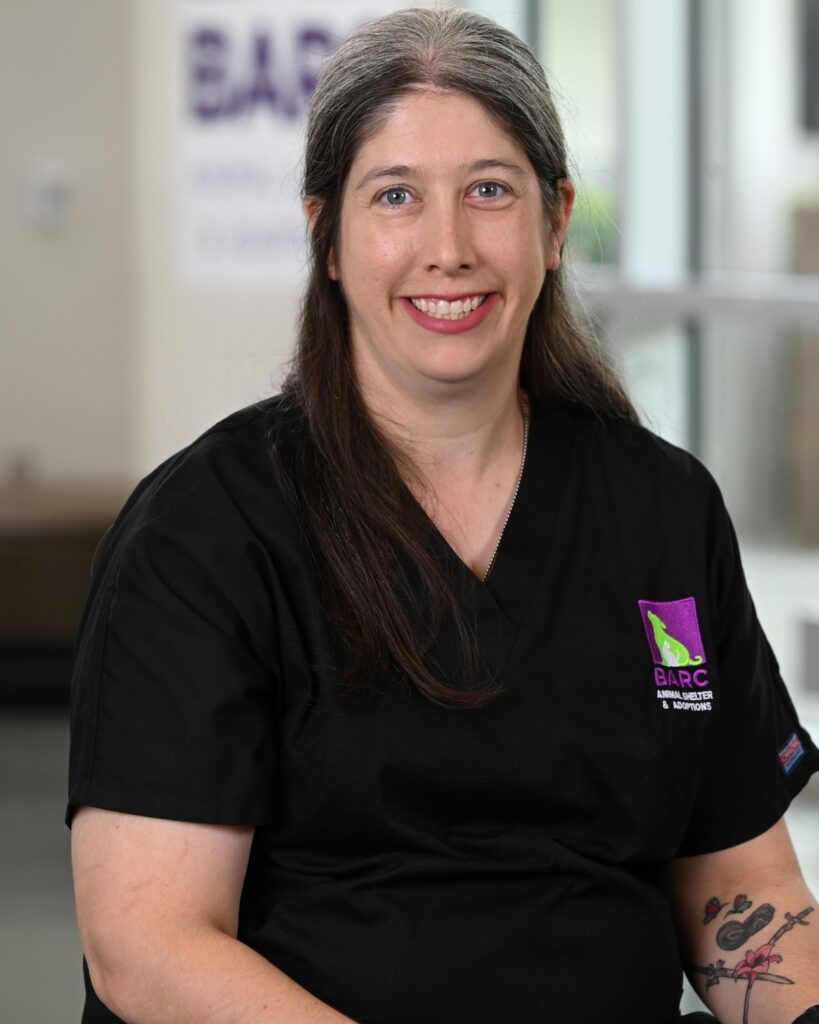
Elizabeth McNeil, LVT, MS
Elizabeth McNeil is a Licensed Veterinary Technician with a Master’s degree in Shelter Animal Medicine, a Bachelor’s degree in Biology, and an Associate’s degree in Veterinary Technology. She also holds certifications as a Professional Animal Cruelty Investigator and Advanced Animal Cruelty Investigator.
With over two decades of experience in the veterinary field, Elizabeth currently serves as the Shelter Supervisor for the medical department at BARC Animal Shelter and Adoptions in Houston, Texas. She is deeply committed to improving animal welfare through innovative practices and community engagement.
Based in Houston, Elizabeth has led impactful community outreach initiatives focused on increasing the use of pet microchips, as well as a project demonstrating a steady rise in microchipping rates among owned pets. Her dedication extends to improving recovery rates for lost pets and advocating for responsible pet ownership.
Driven by her passion for advancing shelter medicine and animal welfare, Elizabeth continues to inspire positive change within her community in Houston and the broader field of veterinary care.
Sessions:
A Shelter Approach Dealing with a Distemper Outbreak
This presentation explores the impact of Canine Distemper, a highly contagious and preventable disease, on shelter populations. While private veterinary clinics routinely vaccinate pets, homeless animals entering shelters often have unknown vaccine histories, posing significant challenges. The discussion will focus on how BARC Animal Shelter and Adoptions implemented strategies to prevent the spread of Canine Distemper among its vulnerable shelter animals, providing insights that can be applied in veterinary and shelter settings.

Maria Moriyon, DVM
Sessions:
Drop It Like It’s Hot: A Review of Ocular Pharmacology
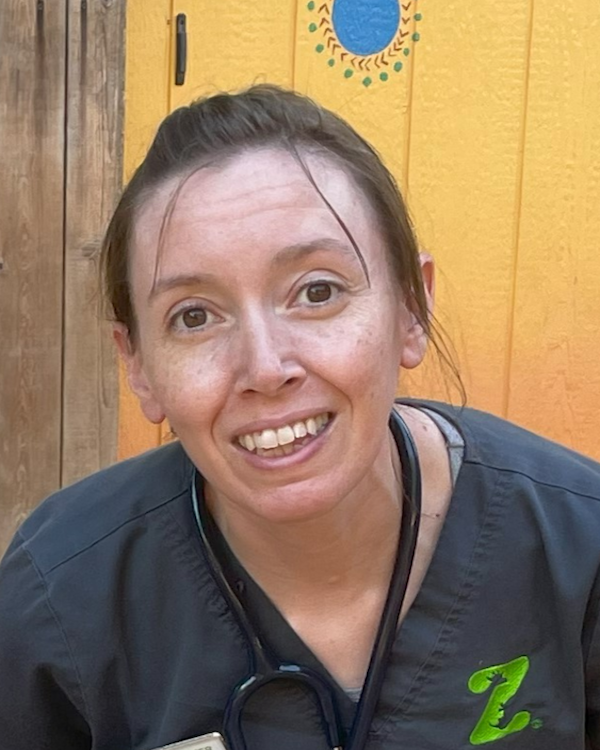
Jennifer Perkins, LVT
Jennifer attended the University of Maine graduating with a Bachelor of Science in zoology. After graduation Jennifer worked as a zookeeper at the Birmingham Zoo for a year before attending Medaille College in 2006, graduating with an associate’s degree in veterinary technology and received her licensure in the state of New York. In 2008 she began working at a general small animal practice until October 2012 when she accepted a position at Texas A&M veterinary teaching hospital in the zoological medicine service. After 7 years of working at the teaching hospital, Jennifer transitioned to working at a zoological facility. She currently lives with her two tortoises
Sessions:
Matching the Unlikely: Blood Cross-matching for Exotic Species
When discussing cross-matching it is generally focused on dog and cats, but what about exotic species. It can play an important role in preventing further complications in already compromised patients. This presentation will concentrate some exotic species with an overview discussing the need for blood transfusions and cross-matching. Since there are not commercially available kits for exotics, a discussion focused on various methods to perform a cross-match will be covered as well as considerations about potential donors and possible outcomes.
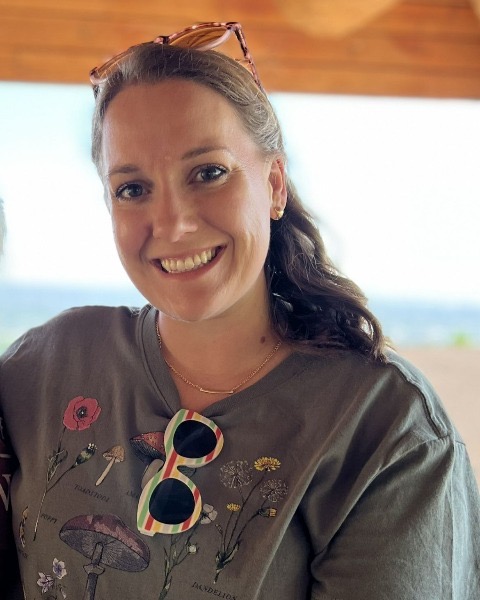
Sarah Perry, BS, LVT, VTCert (TMedNsg)
Sarah began her journey at the Veterinary Medical Teaching Hospital (VMTH) in 2010 as a student technician in the small animal orthopedics department. After completing her Bachelor’s degree in Animal Science, she joined the team full-time as a clinical trials technician while pursuing her Associate’s degree in Veterinary Technology. Once Sarah became a licensed technician, she discovered my passion for emergency and critical care, transitioning to the small animal ICU in 2020 and taking on the role of the first critical care technician in 2021, in which she played a pivotal role in establishing and growing the internal blood bank. Sarah holds a certification from the International School of Veterinary Postgraduate Studies in transfusion medicine nursing and recently submitted for a VTS in Emergency and Critical Care.
Sessions:
Hot Under the Collar: Canine Heat Injury
This lecture will cover the normal physiology of heat loss and how different body systems respond to heat injury. It will also explore treatment strategies and key prognostic indicators for heat injury. The session will conclude with a discussion of several specific case studies to illustrate these concepts in practice.
Vital Drops: Canine and Feline Transfusion Medicine
This lecture will cover essential topics in transfusion medicine, including blood types, pretransfusion testing, and product procurement. It will discuss various small animal blood product options, appropriate administration, and common transfusion-associated complications.
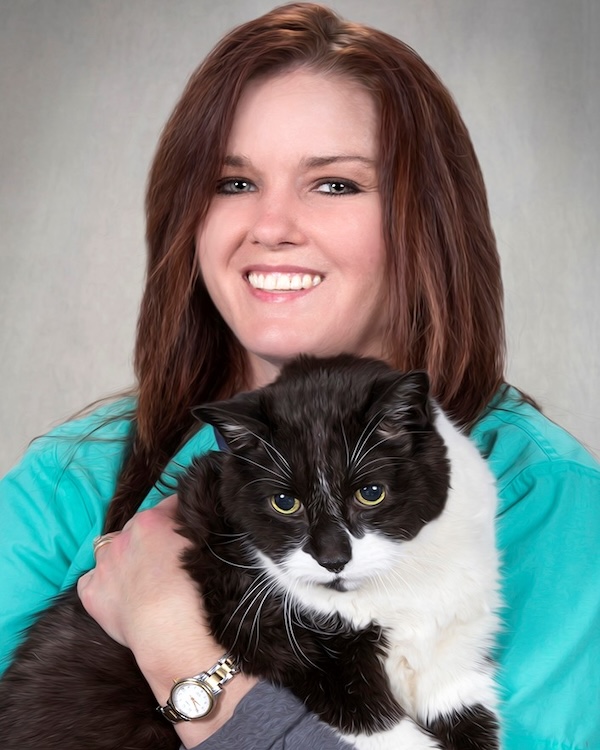
Paula Plummer, LVT, VTS (ECC, SAIM, CP-fe)
Paula has been at Texas A&M University Veterinary Teaching Hospital since 2007. She has worked in the Small Animal ICU, Feline Internal Medicine, Oncology, and now trains new staff for the hospitals. She graduated from Murray State College in Tishomingo, OK and has been credentialed since 2000. In 2011 she received her veterinary technician specialty in emergency and critical care and in 2014 she received her second VTS in small animal internal medicine. She is one of three organizing committee members for the AVTCP-Feline VTS. Outside of work Paula has authored multiple articles and book chapters, and most recently is the editor of the new Feline Internal Medicine for Veterinary Technicians textbook to be released in 2025. She has been a guest lecturer and lab instructor at many continuing education conferences and serves on several regional and national committees.
Sessions:
Getting the Most Out of Your Career
Was there a time that you were ambitious with goals, excited to achieve them and always on the lookout for new challenges? Then somewhere along the way, that spark, the ‘it’ factor faded and now you’re getting up for work every day only looking forward to your next day off. Where did that excited person go? Everyone goes through phases like this but how do you ensure that at the end of your career you got the most out of what you wanted in veterinary medicine? This is a topic that hits close to home for everyone. Come to this lecture to refresh, remember what your ‘it’ factor is/was and possibly learn new ways to get the most out of your career.
Learning Objectives:
• Learn avenues to advance their education within veterinary medicine
• Understand how to effectively set a SMART goal
• List tools to achieve their ambitions within their career
The Technician’s Role in Diabetes Management
Our diabetic feline patients require a team to care for their needs. Veterinary professionals and compliant owners are all pieces of the puzzle for successful treatment. Once the patient has received an accurate diabetic work up, continued care consists of repeat hospital visits and home care. A technician is involved in every step of the patient’s journey from performing proper diagnostics to client education and follow up care during rechecks. Attend this lecture to refresh old knowledge and pick up new tips and tricks to share with owners and their beloved feline family members.
Learning Objectives:
• Understand the accurate process to perform accurate diagnostics related to diabetes mellitus in the feline patient
• Understand the basic concepts of performing accurate glucose curves on feline patients
• The Educate clients on the importance of nutritional management for the diabetic patient
• Outline the importance of proper home glucose monitoring for the feline patient
• Effectively communicate the proper steps of home insulin administration to owners of diabetic patients
• Understand the importance of the owner keeping proper medical records for home care for the newly diagnosed feline diabetes mellitus
Systemic Fungal Disease in the Canine and Feline Patient
Systemic fungal diseases such as Histoplasmosis, Blastomycosis, Aspergillosis and Cryptococcus are all fungal infections that can be seen if our patients are in the correct environment. Understanding clinical signs, new diagnostics, treatments, and nursing care techniques for patients experiencing these infectious diseases will make the technician a better patient advocate. Come to this case-based session and figure out if the fungus is among us.
Learning Objectives:
• Describe clinical signs, diagnostics, treatment therapies and prognosis of Histoplasmosis
• Describe clinical signs, diagnostics, treatment therapies and prognosis of Aspergillosis
• Describe clinical signs, diagnostics, treatment therapies and prognosis of Blastomycosis
• Describe clinical signs, diagnostics, treatment therapies and prognosis of Cryptococcus
Feline Chronic Kidney Disease
Feline CKD is a common condition seen in our patients. Understanding physiology of the disease and using the IRIS staging system will help the veterinary team better determine the prognosis of the patient. Short term and long-term treatment options and client education will help today’s veterinary technician be better patient advocates.
Learning Objectives:
• Understand common clinical signs and physical examination findings associated with chronic renal disease
• A review of the International Renal Interest Society (IRIS) guidelines will be reviewed, providing the attendees with a general understanding in renal staging
• The attendee will be familiar with nursing care techniques for the patient with renal disease
• Common client education topics will be reviewed, giving the attendees general knowledge of topics to review with owners caring for pets with chronic renal disease
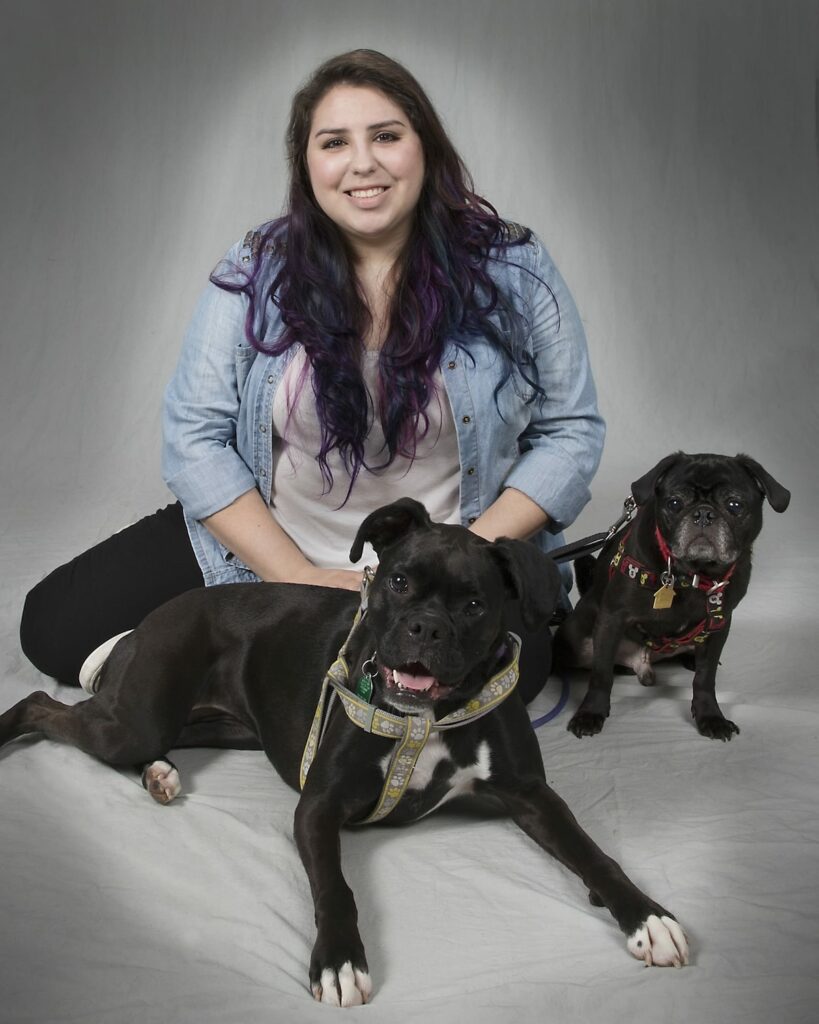
Jerri Rubio, LVT, VTS (Anesthesia & Analgesia)
Jerri Rubio received her associates in applied science in Veterinary Technology from the Vet Tech Institute of Houston in 2013. She then worked at the Texas A&M University in the Small Animal Veterinary Teaching Hospital, where she started operating room for ~2 years and then moved to the anesthesia department for 9 years. In 2023 she became a Veterinary Technician Specialist in Anesthesia and Analgesia. She recently made a career change and is now working in emergency medicine at Veterinary Emergency Group in San Antonio, Texas hoping to work toward obtaining a VTS in Emergency and Critical Care.
Her veterinary passions include community outreach via low cost or free spay and neuter events and providing well balanced analgesia to patients via local blocks. Some of her favorite things in life are her black cat Van Helsing, Pugs, K-pop music, and Mexican snack shops.
Sessions:
“You Need to Calm Down”: Selecting a Premedication Protocol
There are multiple benefits to administering sedatives, anxiolytics, and premedication’s to patients before an anesthetic procedure. We will review different medications and reasons for selection in order to provide the patient with a well-rounded pre-medication protocol.
“I Can Do It With a Broken Heart”: Anesthesia and Cardiovascular Disease
Cardiovascular affects a wide range of patients from young to old, congenital to acquired, as well as breed dispositions. This topic will review the anticipated complications associated with Degenerative Valvular Disease, Hypertrophic Cardiomyopathy, and Dilated Cardiomyopathy.
“Your Sweet Disposition and My Wide-Eyed Gaze”: Anesthesia and the Diabetic Patient
Diabetes can impact multiple body systems and cause anesthetic complications. This lecture will cover pre-anesthetic diabetic guidelines and managing complications under general anesthesia.
“Who’s Afraid of Little Old Me?”: Anesthesia and the Tiny Creatures
This lecture will cover the anticipated complications of anesthetizing small and young small animal patients. It will also provide preventative tips to ensure a smoother anesthesia process for both the patient and the anesthetist.
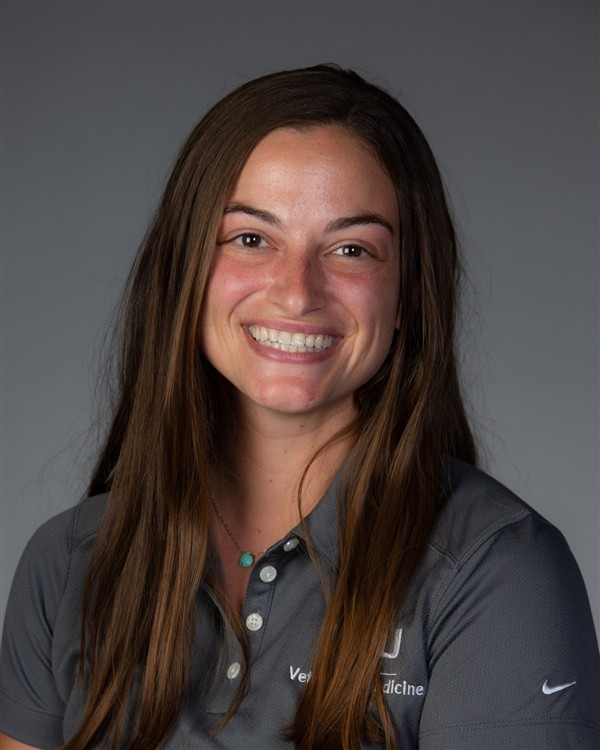
Elizabeth Rumfola, DVM
Dr. Rumfola attended Louisiana State University for veterinary school. She is currently completing a large animal internal medicine residency at Texas A&M with an emphasis in food animal.
Sessions:
Chuteside Shots: The Basics of Herd Work
This session will provide information about vaccines, deworming, and other injections that may be given during a herd work. We will discuss where to give injections, different routes, and a little information about each medication administered
The Care and Keeping of the Camelid
This session will be a discussion of basic camelid husbandry and diseases that are often encountered, as well as some handling tips, anatomical differences, and important information to discuss with clients.
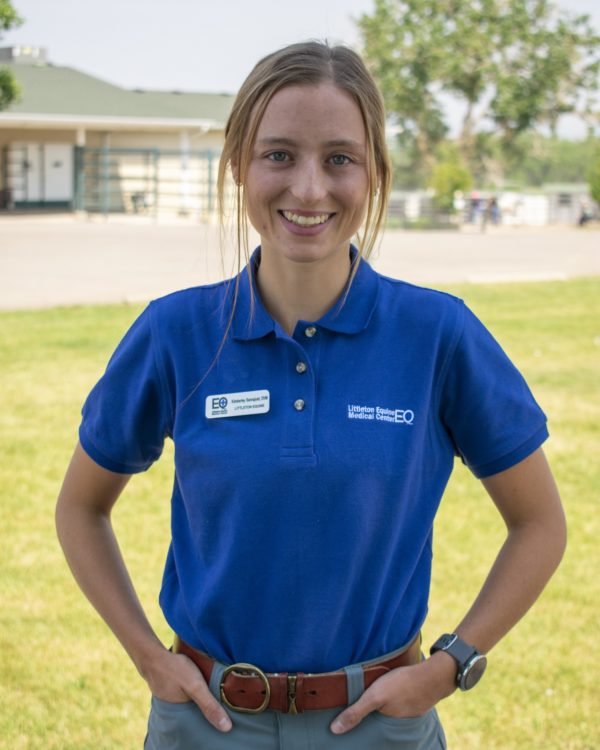
Kimberley Sannajust, DVM
Dr. Sannajust graduated with her veterinary degree from the University of California, Davis in 2021. She then completed a rotating equine internship at Littleton Equine Medical Center, followed by a large animal diagnostic imaging fellowship at the University of Pennsylvania’s New Bolton Center. She is currently a second year diagnostic imaging resident at Texas A&M with a passion for both large and small animal diagnostic imaging. Outside of veterinary medicine, Dr. Sannajust can be found out running, riding her bike, chilling with her pet rabbit and exploring the great outdoors.
Sessions:
Paws and Pixels: Mastering Diagnostic Imaging in Small Animals
Moo-ving Forward: Diagnostic Imaging Adventures in Food Animals

Amy Savarino, PharmD
Amy Savarino, PharmD is the chief pharmacist at the Texas A&M Veterinary Medical Teaching Hospital (VMTH). She is a diplomate of the International College of Veterinary Pharmacy, and a fellow and the treasurer of the Society of Veterinary Hospital Pharmacists. Dr. Savarino has worked in the VMTH pharmacy for 15 years and has been the chief pharmacist since 2018. She serves as director for the Texas A&M Veterinary Pharmacy Residency Program. She enjoys working with veterinary and pharmacy students to bridge the gap between the two professions.
Sessions:
Recognizing drug diversion: A series of stories and red flags
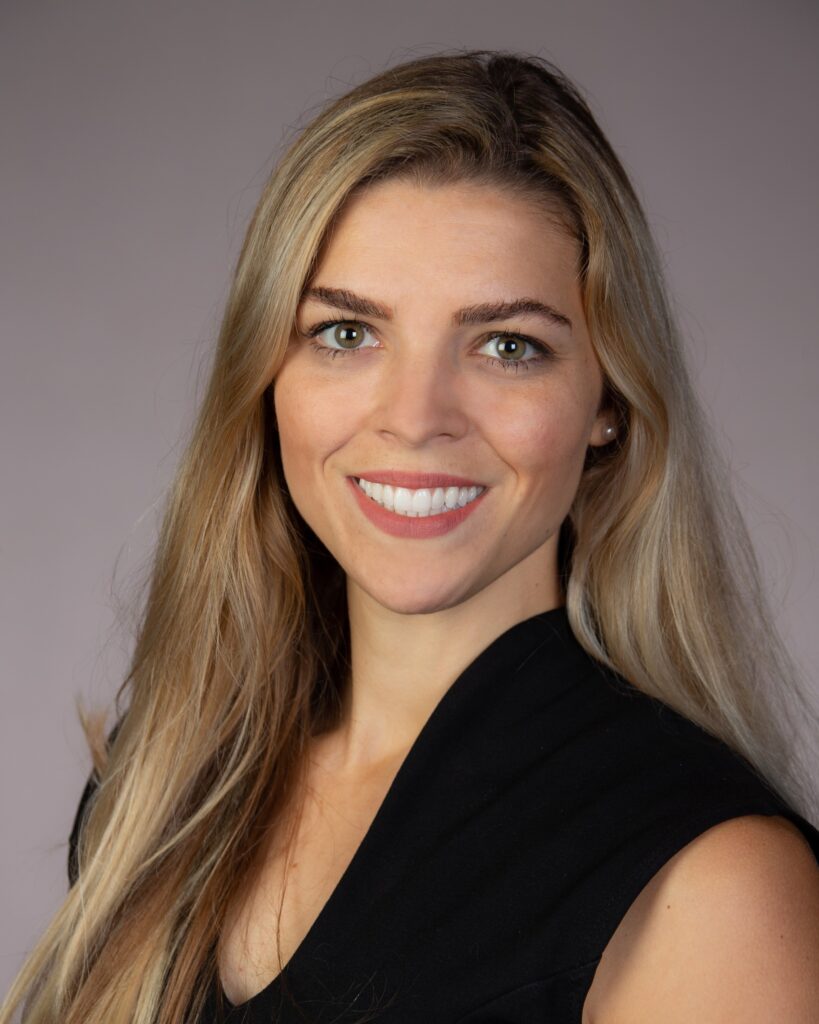
Bridget Savitske, DVM
Bridget Savitske is from Atlanta, GA. She obtained her veterinary degree at the University of Georgia and completed both a Large Animal rotating internship and Large Animal Internal Medicine residency at Texas A&M. She now works at the Texas A&M Veterinary Medical Park as a clinical veterinarian and researcher.
Sessions:
It’s Electric! Understanding the ECG
Introduction to the production and interpretation of ECGs. This lecture’s focus will be for the equid patient but we will lay a foundation for understanding the ECG in any species.
The Horse That Huffs and Puffs
This lecture will provide an overview of differential diagnoses, diagnostic workup and interpretations, and recommended therapies for the horse with respiratory disease.
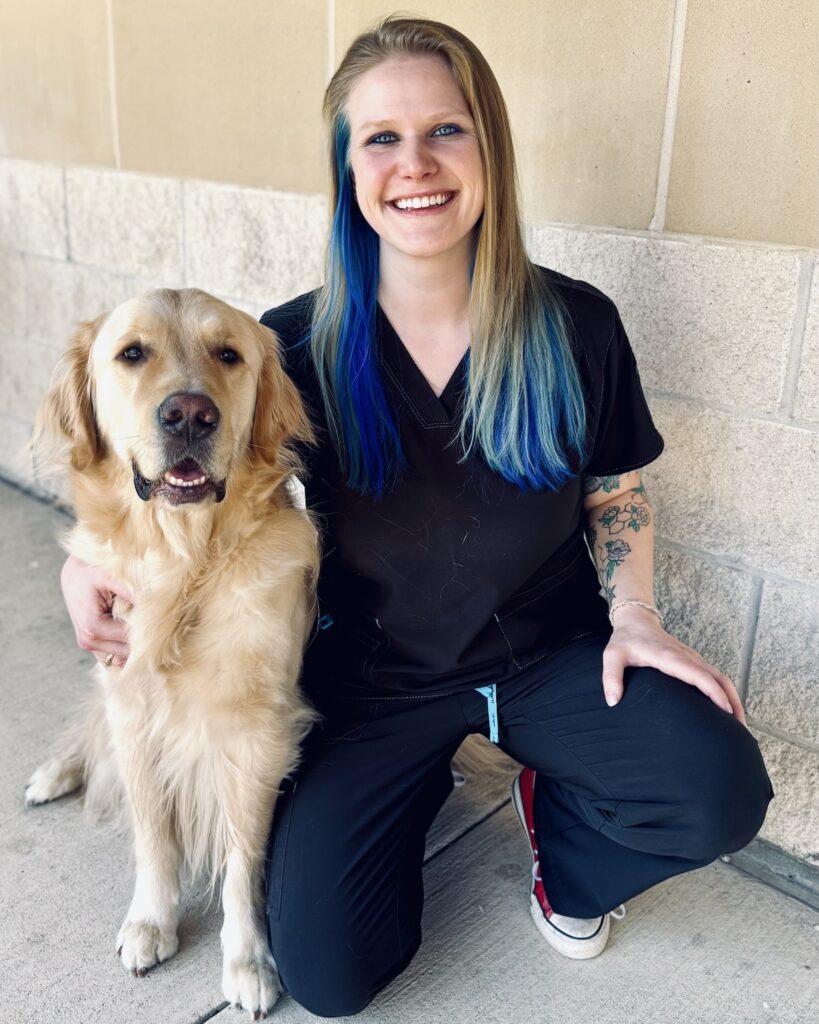
Katrina Sciba, LVT
Kat Sciba is a licensed veterinary technician at the Texas A&M Small Animal Hospital. She has worked there for more than 7 years and has previous experience in a high-volume private practice as well as a local animal shelter. Her primary interests include anesthesia and emergency/critical care, though her main passion is patient care and teaching students.
Sessions:
When Hormones Go Haywire: Part 1 – Addison’s Disease
An overview of the presentation, diagnosis process, and treatment for Addison’s Disease.
When Hormones Go Haywire: Part 2 – Cushing’s Disease
An overview of the presentation, diagnosis process, and treatment for Cushing’s Disease.
pHunny Business: Finding Humor in Acid-Base
A case study approach to understanding common acid-base imbalances.
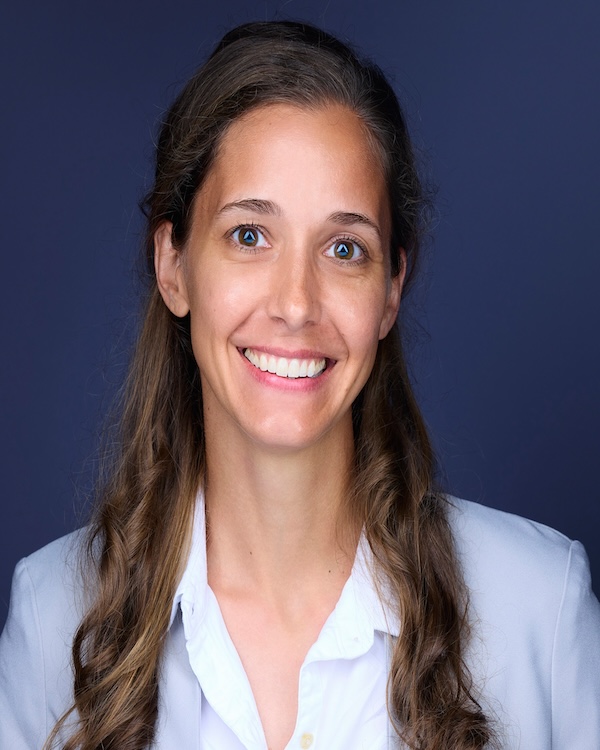
Ashley Self LVT, VTS (Nutrition)
Ashley is currently an assistant director of nutrition within the GI-lab at Texas A & M University where she works as part of a team to progress clinical nutrition through direct patient care, research, and teaching. Before her current role, Ashley was a veterinary nurse on the clinical nutrition service at the University of Tennessee for the past 12 years. She received her veterinary nursing specialty in nutrition in 2018 and currently serves as the secretary for the American Academy of Veterinary Nutrition. Ashley completed her master’s degree in 2023 at the University of Tennessee in animal science focusing on equine nutrition. Looking forward she hopes to enhance nutrition support for hospitalized patients and promote the utilization of veterinary nurses in nutrition.
Sessions:
Understanding Pet Food Labels and Product Guides
In this session, participants with be reminded about how pet food is regulated and provided with a preview for coming proposed changes to pet food labeling. In addition, common pet food labeling terms that are frequently areas of concern for pet owners will be reviewed to support more discussion with owners around this topic. Participants will also learn how to compare pet foods and the necessary math when only the guaranteed analysis is available. In addition, orienting to company product guides and where to look for specific nutrient information will be discussed.
Nutrition Support for the CKD Patient
In this session, participants will learn about nutrition interventions for patients with chronic kidney disease. Participants should leave being able to describe the components of a therapeutic renal diet and how this can improve the quality and length of life for a pet with CKD.
Dietary Fiber, Not a One Dose Fits All
In this session, participants will learn about the different fiber types and how characteristics such as viscosity, fermentability and solubility can impact the use of fiber within our veterinary patients. In addition, differences when interpreting fiber on labels, such as crude fiber or total dietary fiber and how to compare dietary fiber content and type, will be discussed. Participants will gain an understanding for the complexity of dietary fiber and considerations when dietary fiber is manipulated.

Alanna Sessum, LVT
Sessions:
FreezeFrame! Tips and Techniques for Taking the Best Diagnostic Images Possible in Clinic
This presentation will cover proper patient positioning, how to recognize poor positioning, how to recognize proper technique how to utilize sedation, sedation protocols, and patient care during imaging for critical patients.
Teeth and Claws and Wings, Oh My!
How to Take Great Diagnostic Images on Those Feisty Exotics
This presentation will cover positioning techniques for avian and various other common exotics, the use of sedation in exotics, how to recognize proper technique when imaging exotics, how to protect yourself and your patient during imaging
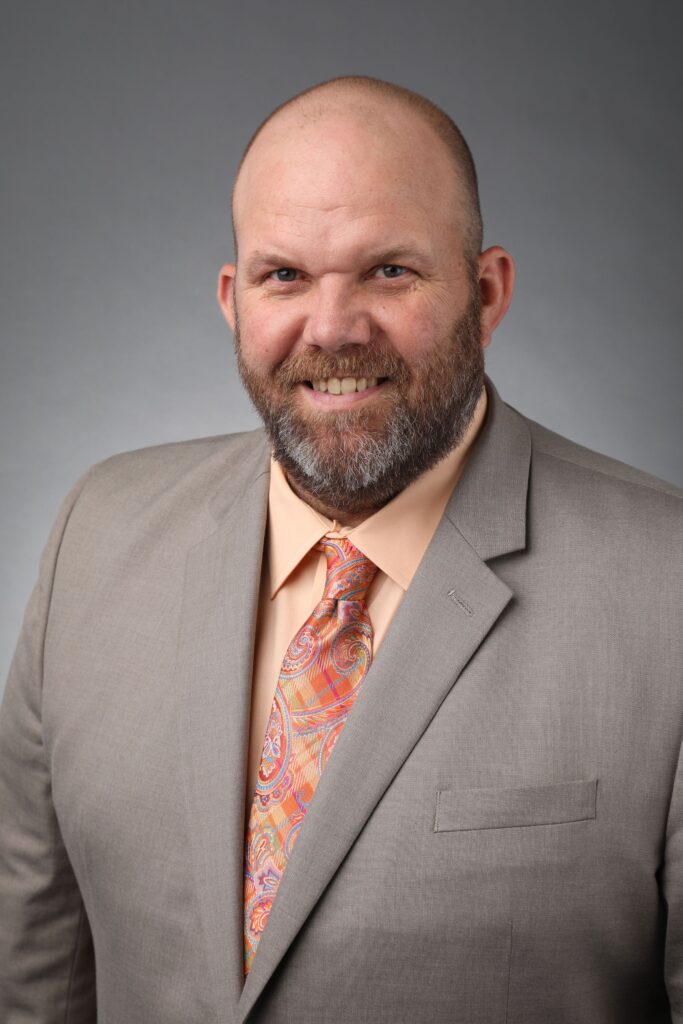
David Sessum, LVT
Originally from Splendora, Texas, David is a 2000 graduate of Lone Star College Tomball’s Veterinary Technology Program in 2000 and is a Licensed Veterinary Technician. David has had a very diverse career since graduation working in private practice at Gulf Coast Veterinary Specialists and then Texas A&M University School of Veterinary Medicine. David then served as faculty and program director of Blinn College and then Lone Star College’s Vet Tech programs before transitioning to the Veterinary Science Certificate Program with Texas A&M AgriLife Extension.
Professional accomplishments include past President of Veterinary Team Association of Texas. David is the first LVT to serve on the Texas Veterinary Medical Association’s (TVMA) Board of Directors. David helped draft the licensure language to change from registered veterinary technician to licensed veterinary technician and be overseen by the Texas Board of Veterinary Medical Examiners (TBVME). David is honored to have been chosen TVMA’s Technician of the Year twice, the first time in 2009 (RVT of the Year) and again in 2019 (LVT of the Year). David serves on multiple TVMA committees and is the first LVT to chair a TVMA committee. David served on AVMA’s Committee for Veterinary Technology Education and Activities, TVMA Paraprofessional Utilization Task Force and AABP’s Credentialed Technician Utilization Task Force. David also serves as superintendent for the Houston Livestock Show and Rodeo’s Vet Science Competition.
Outside of work, David met his wife Alanna at an equine veterinary conference and married in 2017. They have three boys, James Randall, Rhys Alan and Samuel Everett. David also trains and shows donkeys and mules.
Sessions:
State of the Profession: Midlevel Practitioner and other legislative issues affecting Texas Veterinarians and Staff
The mid-level practitioner initiative in Texas as well as other legislative issues being discussed for this legislative session and the 2027 session and their possible effect on veterinary staff.
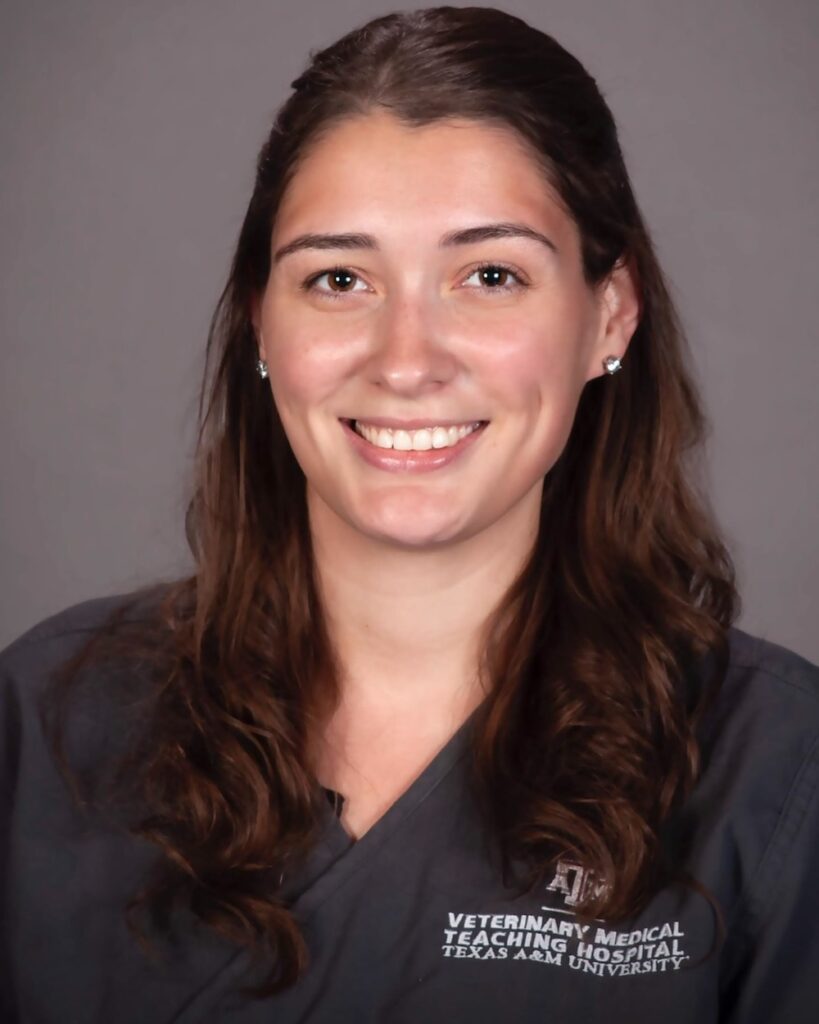
Jennifer Sowinski
Jen Sowinski is a Veterinary Technician in the Food Animal Surgery Department here at Texas A&M. She grew up in rural Massachusetts and acquired her Bachelor of Science degree from Johnson & Wales university in Providence Rhode Island. She joined us here at A&M starting in 2014 where she worked in Equine Soft Tissue Surgery for 7 years and then moved on to Veterinary Medical Park where she cared for the teaching animals for the Vet school. After that, she spent a year in mixed animal private practice before returning to The Veterinary Medical Teaching Hospital in the Food Animal Department. When she is not at work, she enjoys spending time with her family, camping and riding horses.
Sessions:
You’ve Goat to be Kidding Me
An overview of kidding; this session will touch upon breeding goats with the main focus being on kidding, and what to watch out for, as well as some complications that can occur during the process.
This Little Piggie Lives in the House
An overview of caring for pet pigs, this session will focus on how to guide pet pig owners to provide the best at home care including nutrition and enrichment, as well as some helpful tips to use while caring for them while they are in hospital.
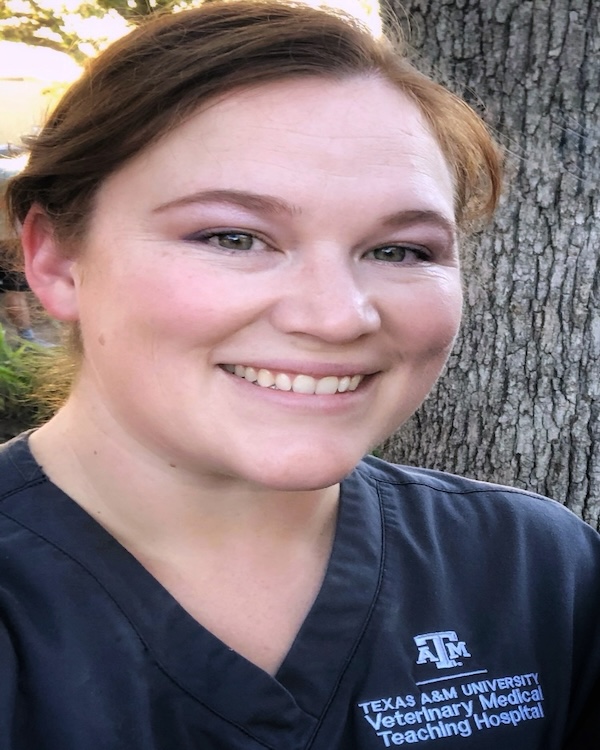
Autumn Teach
Autumn Teach works at Texas A&M’s Large Animal Hospital as the supervisor of our Intensive Care Unit. Autumn earned a bachelor’s degree in biology from TAMU Texarkana, will start a master’s program at Texas A&M Fall ’25, is finishing her last semester at Blinn in the Veterinary Technology program, and will be taking the VTNE this summer. She has worked in the ICU for 9 years, which takes in emergencies after hours. Autumn started out in small animal emergency with a corporation and ended up with Large Animal where her passion has always been.
Sessions:
Equine Emergencies: I Can Fix Him (No, I Really Can), pt. 1
Equine emergencies come in all shapes and sizes: This lecture illustrates the different types of emergencies that horses like to get themselves into and the anatomy for why things go wrong, common emergencies in hospitalized patients, which colics are true ‘colics’ and which are “colics”. In part 1 I will cover how to care for hospitalized patients, what to look out for after hours, and worst-case scenarios. In part 2 I will discuss how we engage our house officers with these in-house emergencies when we find them after hours.
Equine Emergencies: I Can Fix Him (No, I Really Can), pt. 2
The Technicians’ Role in Equine Emergencies: We continue with our emergencies and what our role is as technicians in order to provide exceptional patient care. Teamwork with students, interns, residents, and faculty. Gold standard emergency set-ups; what is needed for each emergency. Common medications used for colics, and at what point is surgery considered. Finally, what does ‘debrief’ look like and how is it helpful.
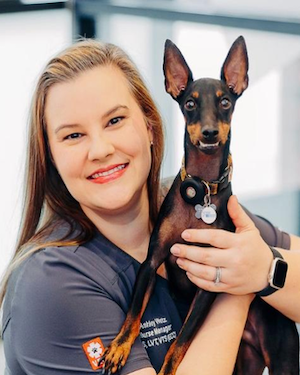
Ashley Wetz, LVT, VTS (ECC)
Ashley Wetz is a dedicated Veterinary Technician Specialist in Emergency and Critical Care, bringing over a decade of experience in the field of veterinary medicine. Licensed in 2010 and specializing in 2020, Ashley’s career is a testament to her commitment to advancing patient care in high-pressure, critical environments. She earned her Bachelor’s degree from Tarleton State University and her Associate’s degree from the Vet Tech Institute, both of which laid the foundation for her work in veterinary emergency medicine. As an “Army brat,” Ashley developed a strong sense of adaptability and resilience early on, qualities that have served her well in the dynamic and demanding world of emergency veterinary care. Her career has spanned multiple roles, including her time at Sugar Land Veterinary Specialists, where she worked in specialty medicine, and currently as a Veterinary Nurse at Veterinary Emergency Group (VEG). A certified RECOVER instructor, Ashley is passionate about improving the outcomes of critically ill patients through cutting-edge resuscitation techniques. She gained national attention when she competed in the 2024 AVECCTN vs AVECCT CPR Battle at IVECCS, demonstrating her expertise in advanced life-saving procedures. Ashley’s areas of focus include Acute Kidney Injury (AKI), critical care management, oxygenation, and the treatment of toxicities. Her passion for patient care drives her to stay at the forefront of veterinary emergency medicine, continually refining her skills to provide the best possible outcomes for patients in life-threatening situations. Outside of her clinical work, Ashley is committed to educating and empowering other veterinary professionals to provide exceptional care in critical moments. She is particularly dedicated to advancing the field through her ongoing education and leadership as a RECOVER instructor.
Sessions:
The Shock Factor: Why fluid loss can lead to catastrophe
An overview of Hypovolemic shock, treatment, and fluid therapy
Sunshine and Danger: Exploring Vitamin D Toxicity
An overview of vitamin D toxicity, pathophysiology and treatments
Electrolytes 101: Essential elements for cellular function
Sodium, potassium, chloride, and magnesium and how they shift and effect body systems
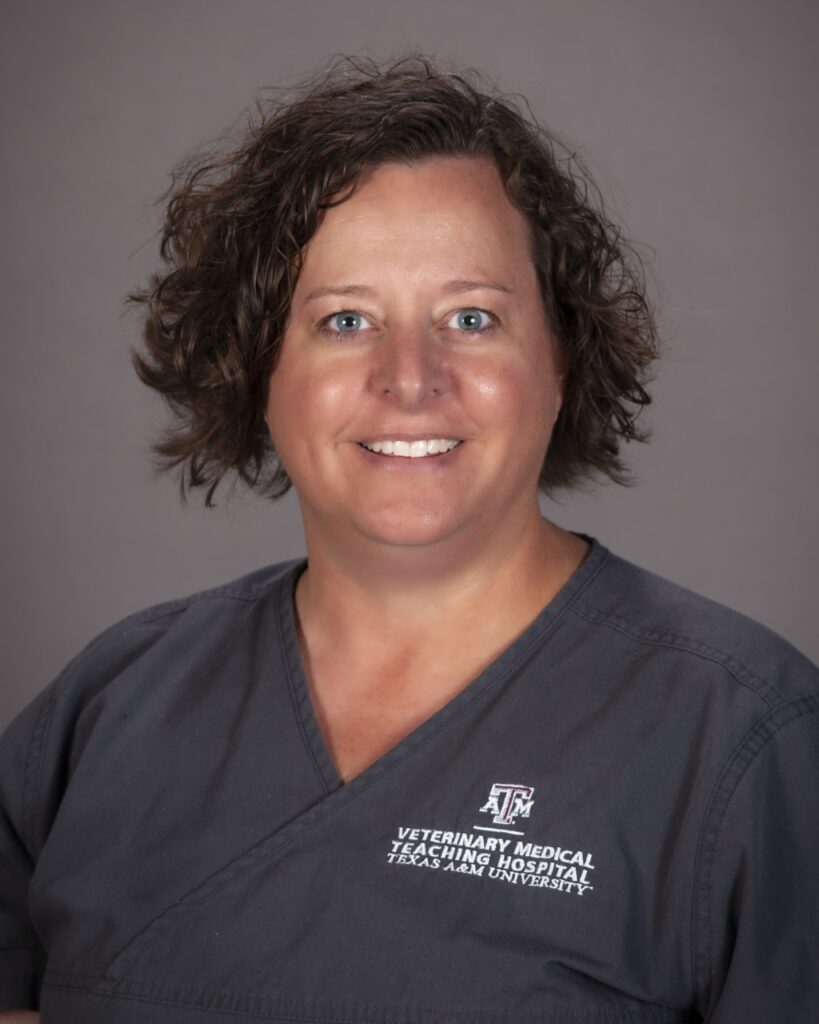
Jennifer Wier, MS
Jennifer Wier grew up in Texas and has lived throughout the southeast United States. She has a Master of Science in Agriculture specializing in equine nutrition and reproduction. She currently works as a Certified Pharmacy Technician (CPhT) at the Texas A&M University Veterinary Pharmacy and also has been an Equine Nutrition Consultant to owners and veterinarians for over 10 years. She has a special interest in the role of nutrition in managing systemic diseases in horses. Jennifer has been lucky to work on many research projects concentrating on fatty acids and vitamin E in the equine diet from UC-Davis to Texas A&M. She has been driven by owning horses with genetic diseases like HYPP and PSSM before these diseases were common knowledge.
Sessions:
The Role of Fatty Acids in the Equine Diet
Work smarter, not harder! When and why should you consider adding fatty acids to the equine diet.
The Hidden Role of Vitamin E in Peak Equine Performance
Harness the benefits of this antioxidant to help your client’s horses achieve greater success and recover more quickly.
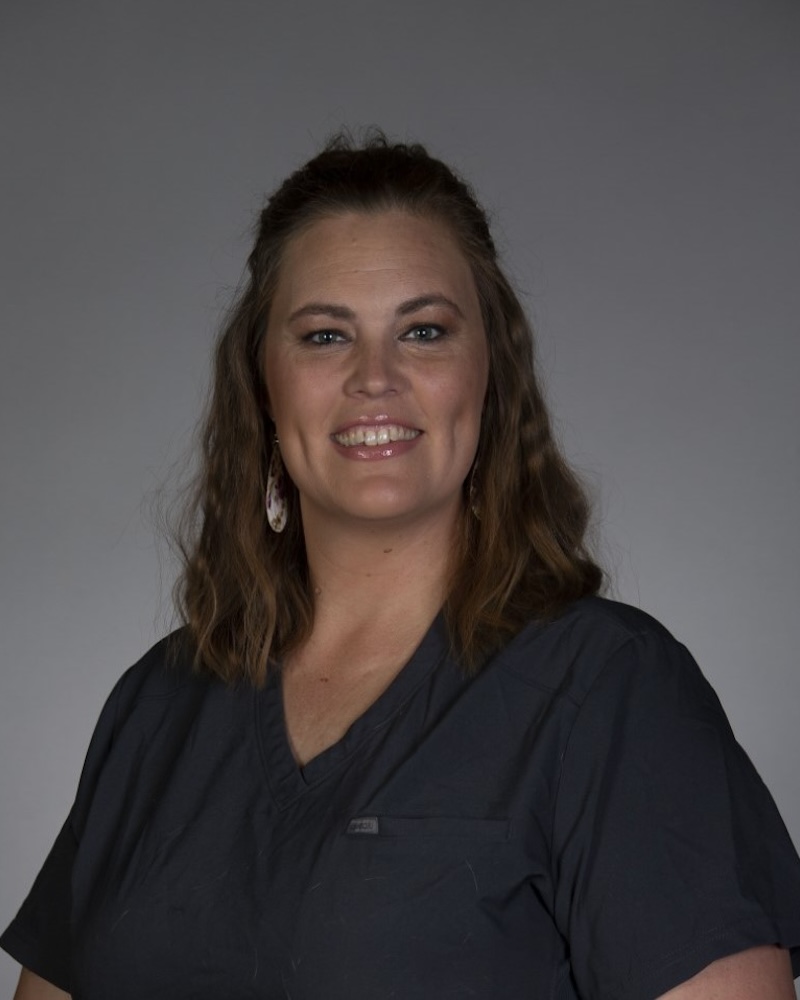
Liz Wood, LVT
Liz Wood has been a part of veterinary medicine since 2008, and received her AAS in Veterinary Technology from Palo Alto College and LVT in Texas in 2010. She was an instructor at Palo Alto College in San Antonio until 2012. She moved to Bryan in the fall of 2012 and started with Texas A&M Small Animal Teaching Hospital in January of 2013. Liz has been with the Oncology service for over 10 years as a medical oncology technician participating in client communication, diagnostics, and treatments of various neoplastic processes, the instruction of 4th year veterinary students, as well as client and patient support through end-of-life care.
Liz currently lives in Bryan with her two children, Christian and Anna, their 3 dogs, Sally Mae, Trinity Gene, and Bitsi Lorraine, and their cat DJ.
Sessions:
Lymphoma Basics
Identification of common presentations, and a How to of Mapping, Measuring, Baseline diagnostics and Referrals
Handling and Submission on Oncologic Diagnostics
Common send out diagnostics, obtaining samples, storage and submission

Morgan Wright, LVT
Morgan received her Associates of Applied Science from The Vet Tech Institute of Houston in 2017. Since then, she has worked in equine surgery, GP, and ER, mixed animal, small animal specialty, small animal GP. She now works at Veterinary Emergency Group in San Antonio. Her veterinary passions include mentoring and teaching new technicians, fostering a positive culture and team dynamic, critical cases, and CPR cases. Some of her favorite things outside of vet med include reading, being outside, duck hunting, and concerts.
Sessions:
Look What You Made Me Do: Making the Switch From Traditional Concept Practice to Open Concept Practice and Escaping Toxicity
Workshops
Bandage Bewilderment Begone! Wound Care with Focus on Basic and Specialty Bandaging
Bandaging woes got you down? This lab will take you from bandaging beginner to bandaging buff! We will discuss wound care basics before diving into how to apply the perfect soft padded bandage. We will also explore tie-over bandages and discuss indications for application of specialty orthopedic bandages like lateral splints, casts, Spicas, Ehmers, and hobbles. You’ll get your hands dirty with bandaging models and be able to ask all the questions you may have about perfect bandage application.
Instructors: Marina Harrison & Kat Sciba
Max. # of Attendees: 20
Anesthetic Calculations: A Solution to Dilutions and CRIs
Did you hate math class growing up? Don’t worry, because we didn’t! This workshop will answer many of the “why” and how” math questions you may have had in your veterinary career. We will review common equations that can be utilized and work through multiple real-life scenarios together such as dose calculations, CRI calculations, and CRI dilutions.
Instructors: Jerri Rubio, LVT, VTS (Anesthesia & Analgesia) & Lanette Jordan, LVT, VTS (Anesthesia & Analgesia)
Max. # of Attendees: 30
Flick of the Wrist: Hand Instrumentation, Charting, Closed Root Planing
While the main tool we use during dentistry is our ultrasonic scaler, we cannot overlook the importance of hand instrumentation. We will look at differentiating hand scalers and curettes and the proper usage. Dental charts are a legal part of medical records and needs to be filled out as thoroughly as possible. Periodontal probes will be used to chart any pathology noted in the mouth.
1. Distinguish between hand scaler vs curette and discuss proper usage
2. Review common oral abbreviations and how to chart
3. Use of periodontal probe to periodontal pockets and other abnormalities
4. Discuss closed root planing and how a this is something a technician can do
Instructor: Vanessa Huizar, LVT, VTS (Dentistry)
Max. # of Attendees: 10
ICU Bootcamp
This is a workshop designed to get any new ICU veterinary technician all the information they need to start their successful ICU career. The session will include dosage calculations, continuous rate of infusions, infectious patients, patient assessment, proper CPR techniques based on the RECOVER Initiative, and compassion fatigue. Come to this workshop/lecture and learn the tools you will need to become a successful ICU technician!
Learning Objectives:
• At the end of the session the attendee will be able to successfully understand the difference between a zoonotic and infectious patient
• At the end of the session the attendee will understand clinical signs of compassion fatigue
• At the end of the session the attendee will understand basic medical math calculations
• At the end of the session the attendee will be able to outline basic life support based on RECOVER techniques
Instructor: Paula Plummer, LVT, VTS (ECC, SAIM, CP-fe)
Max # of Attendees: 24
Local Regional Blocks for the Head…
Local anesthesia is an essential component of veterinary pain management for a wide range of procedures. This hands-on laboratory session will focus on the techniques, indications, and practical applications of local nerve blocks in veterinary practice. Participants will gain experience in performing various local blocks including dental blocks, auricular blocks, and retrobulbar blocks.
Instructors: Jerri Rubio, LVT, VTS (Anesthesia & Analgesia) & Lanette Jordan, LVT, VTS (Anesthesia & Analgesia)
Max. # of Attendees: 24
Local Regional Blocks: … Shoulders, Knees, and Toes
Local anesthesia is an essential component of veterinary pain management for a wide range of procedures. This hands-on laboratory session will focus on the techniques, indications, and practical applications of local nerve blocks in veterinary practice. Participants will gain experience in performing various local blocks including thoracic limb blocks, intercostal blocks, pelvic and hindlimb blocks,and coccygeal blocks.
Instructors: Jerri Rubio, LVT, VTS (Anesthesia & Analgesia) & Lanette Jordan, LVT, VTS (Anesthesia & Analgesia)
Max. # of Attendees: 24
